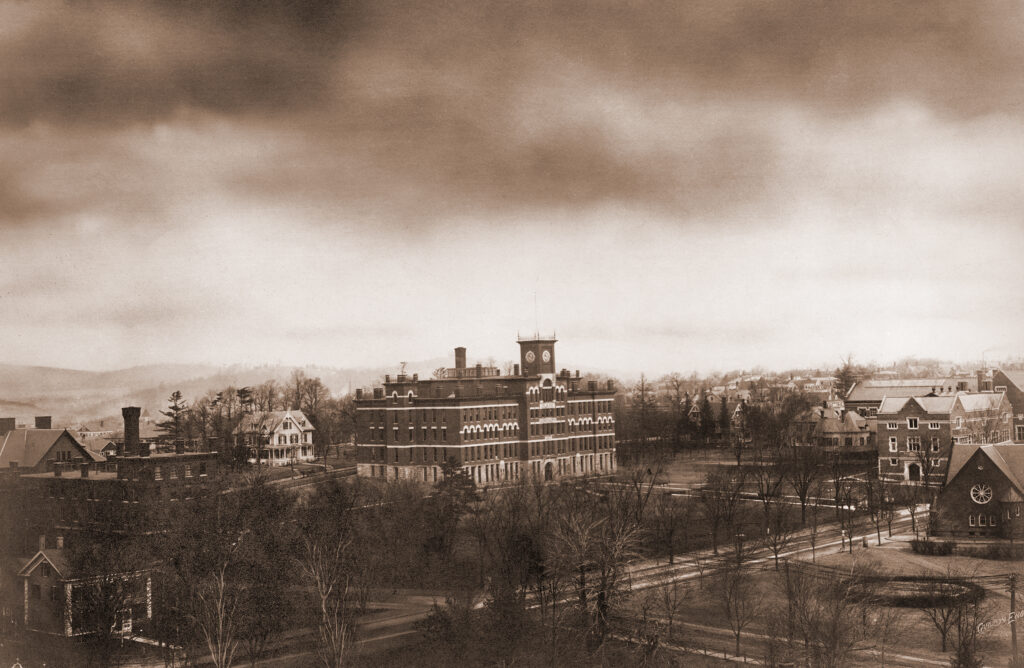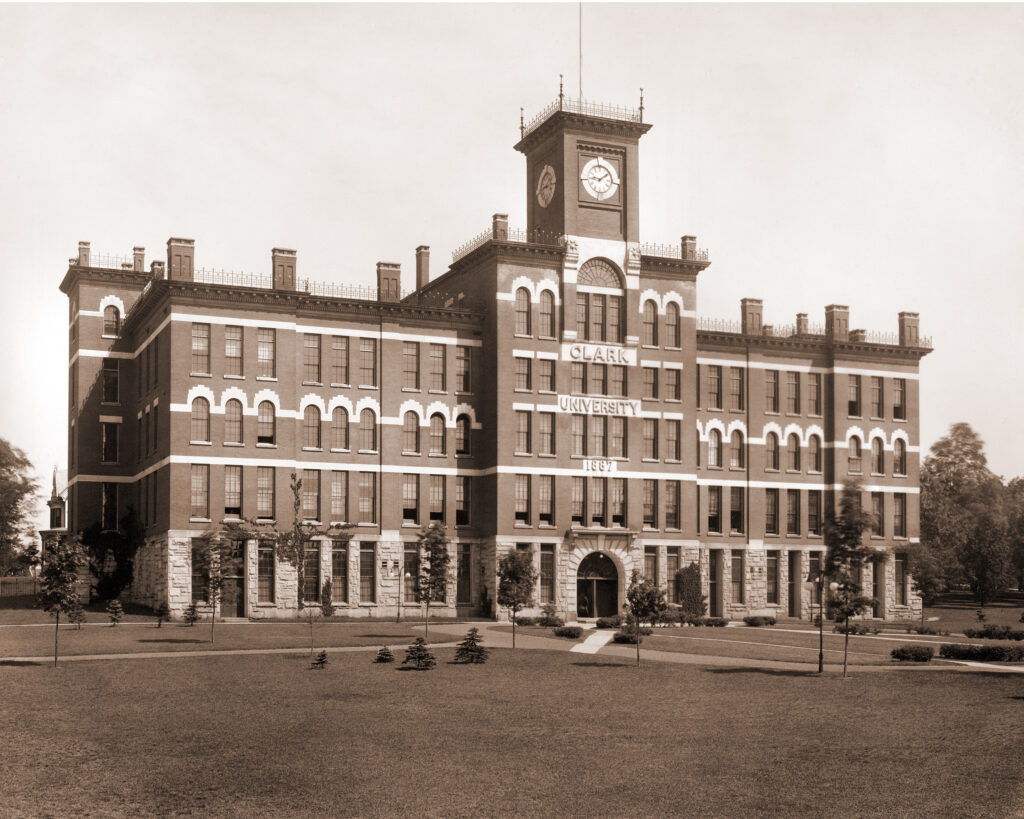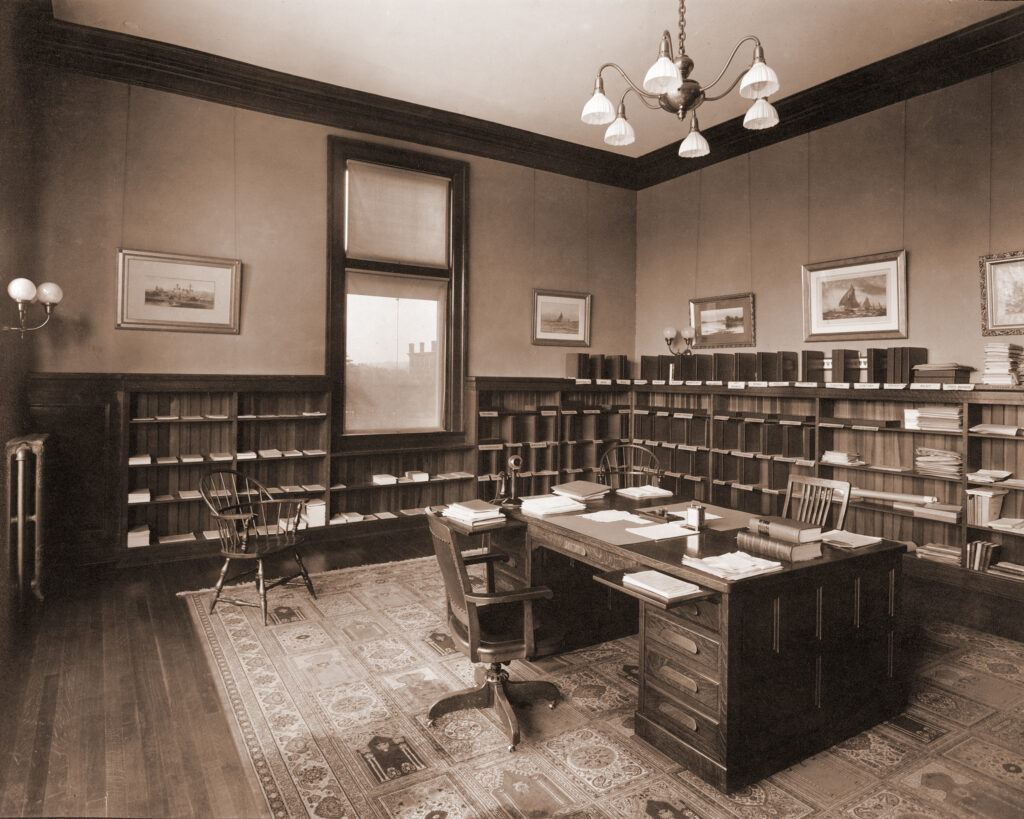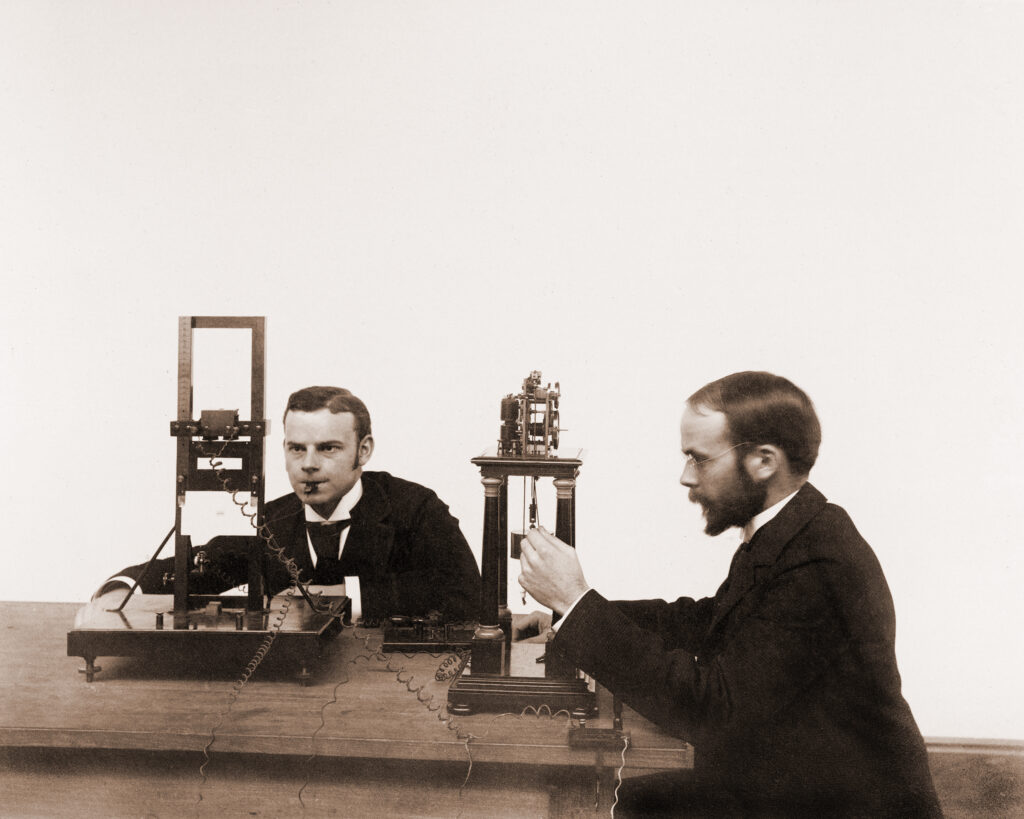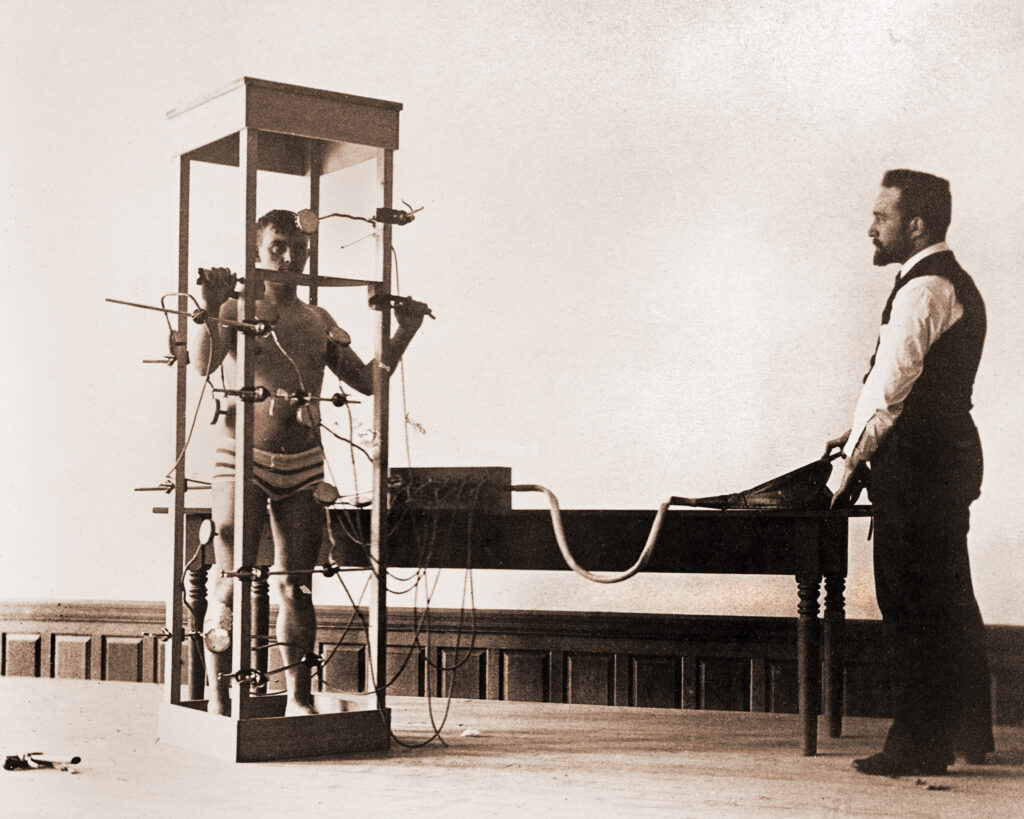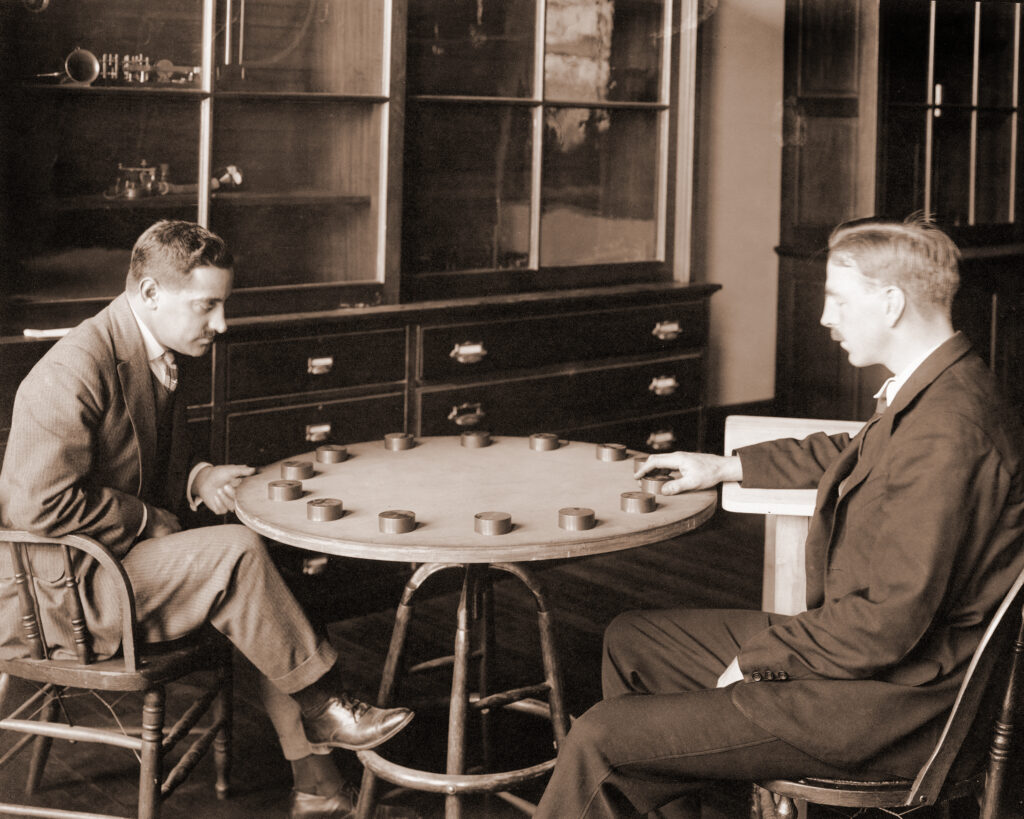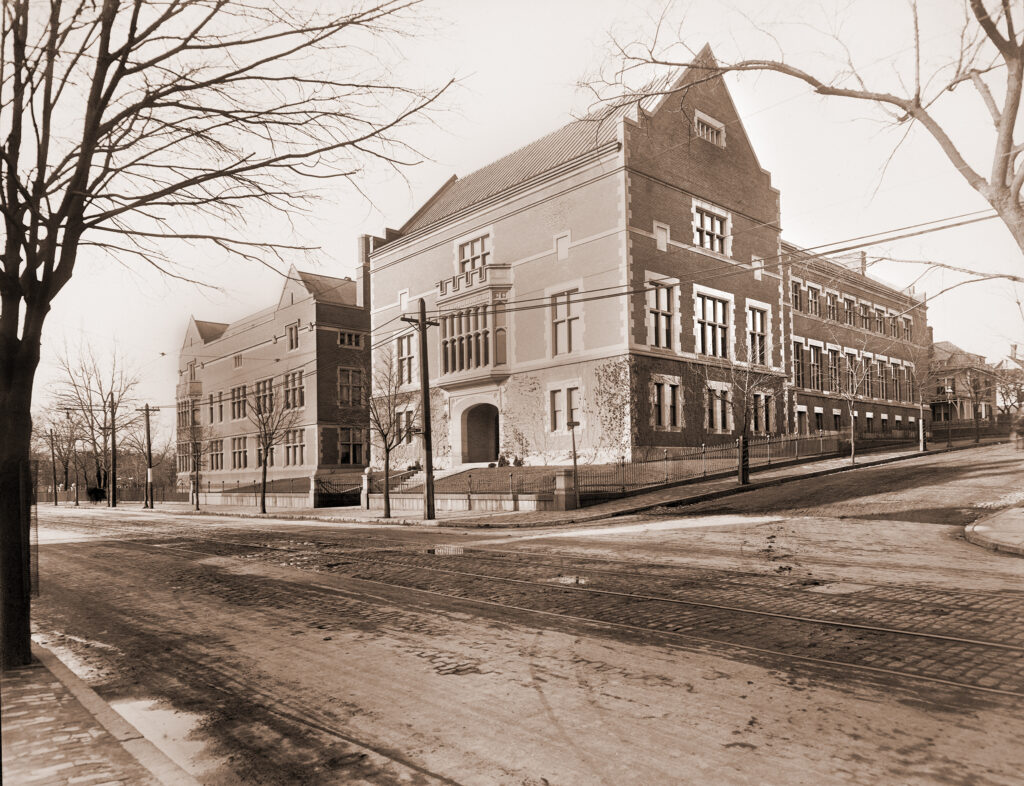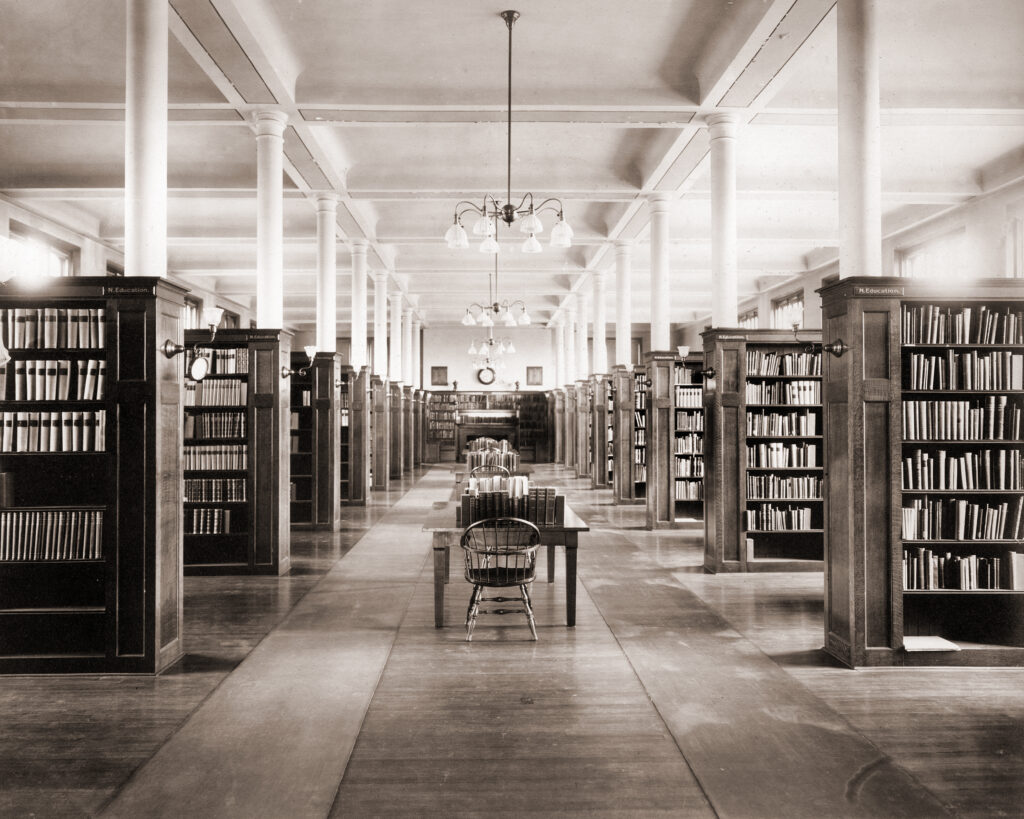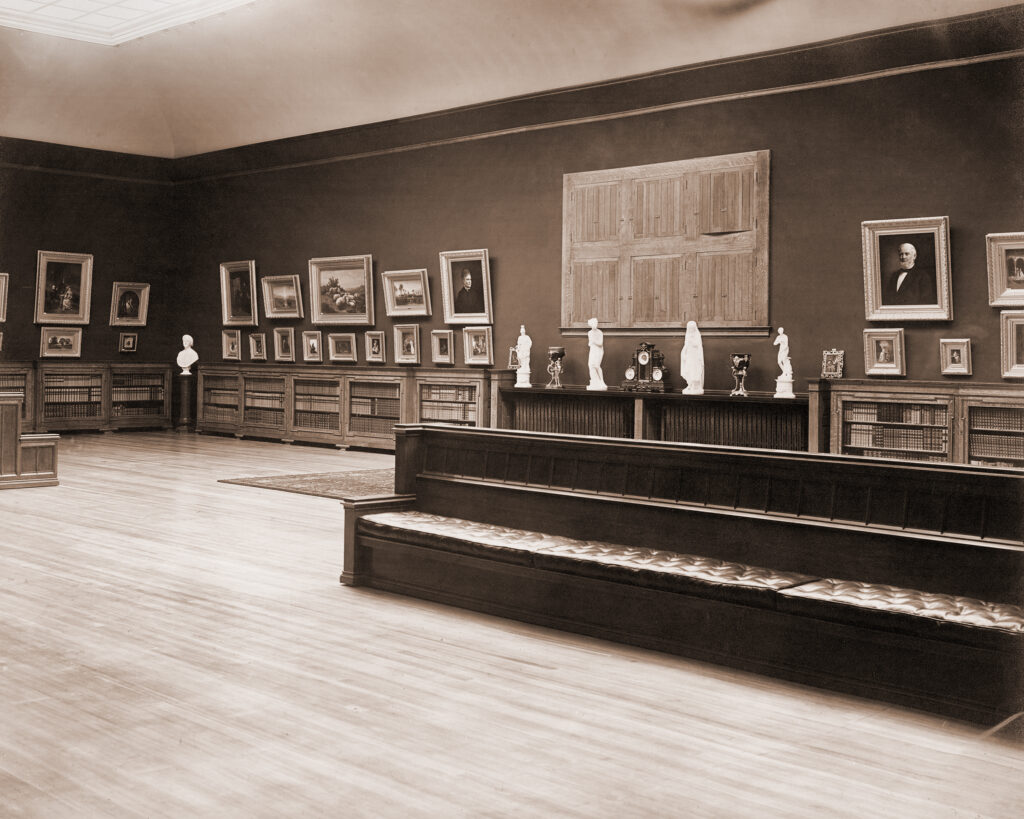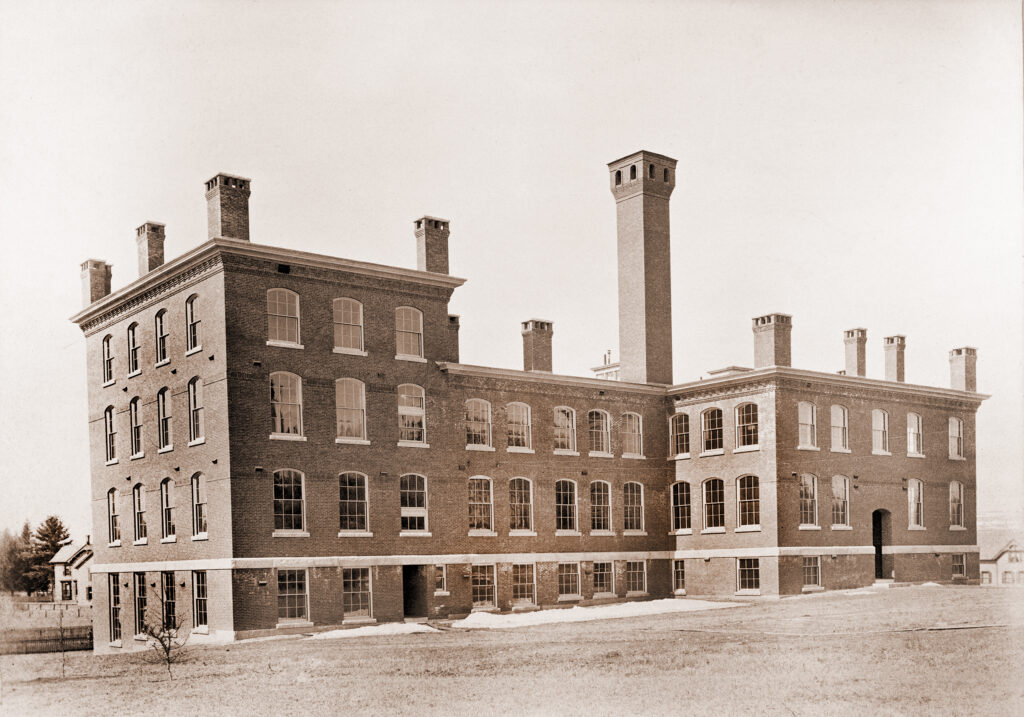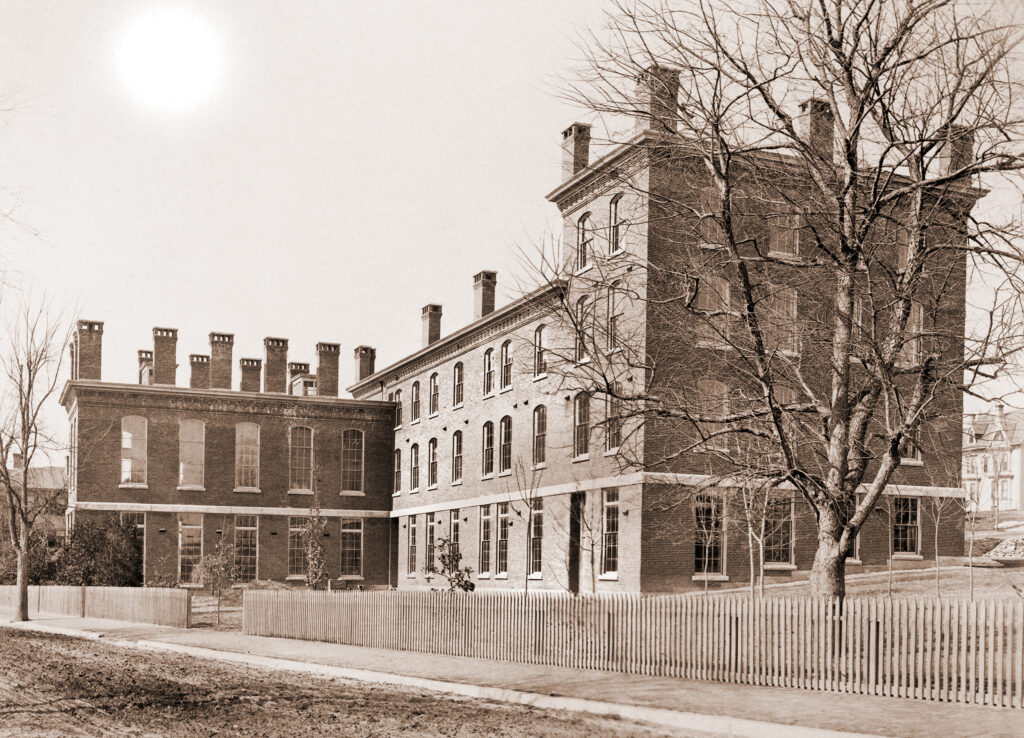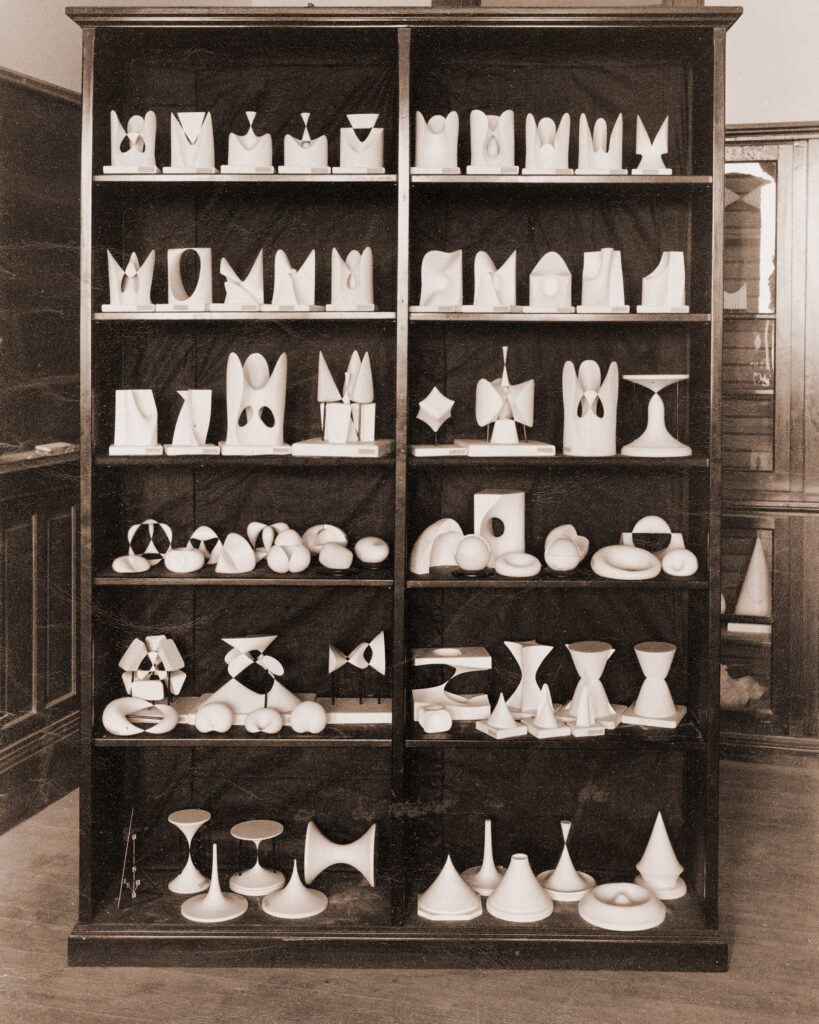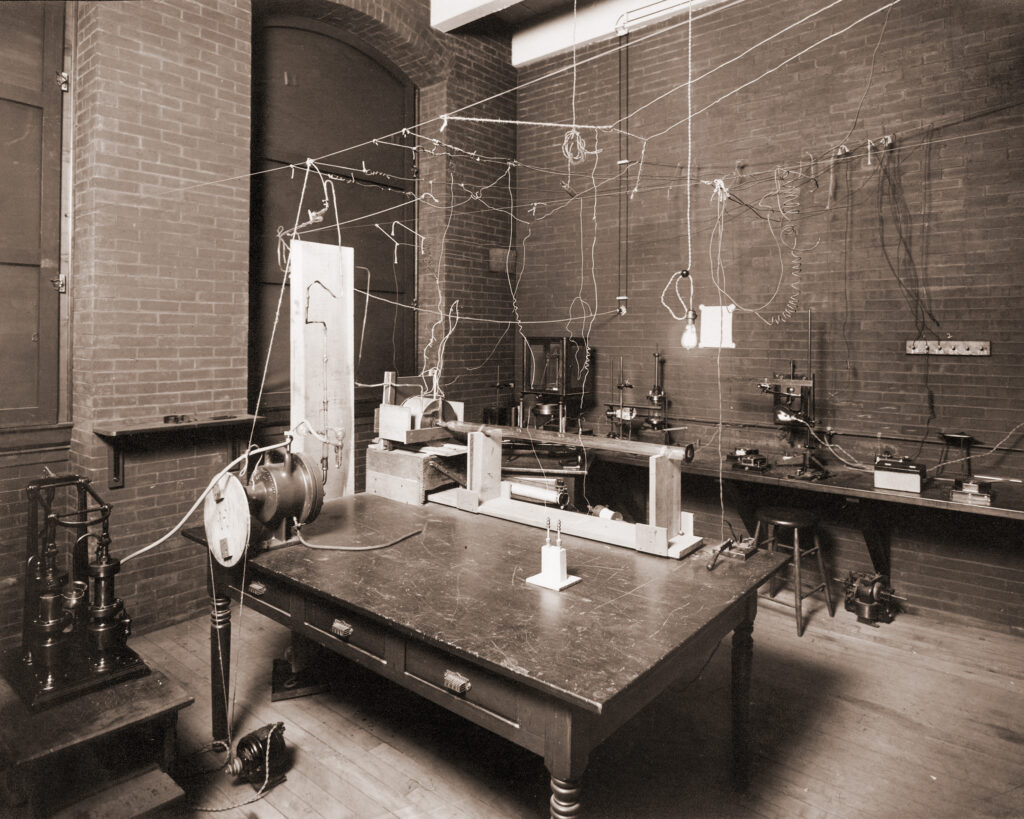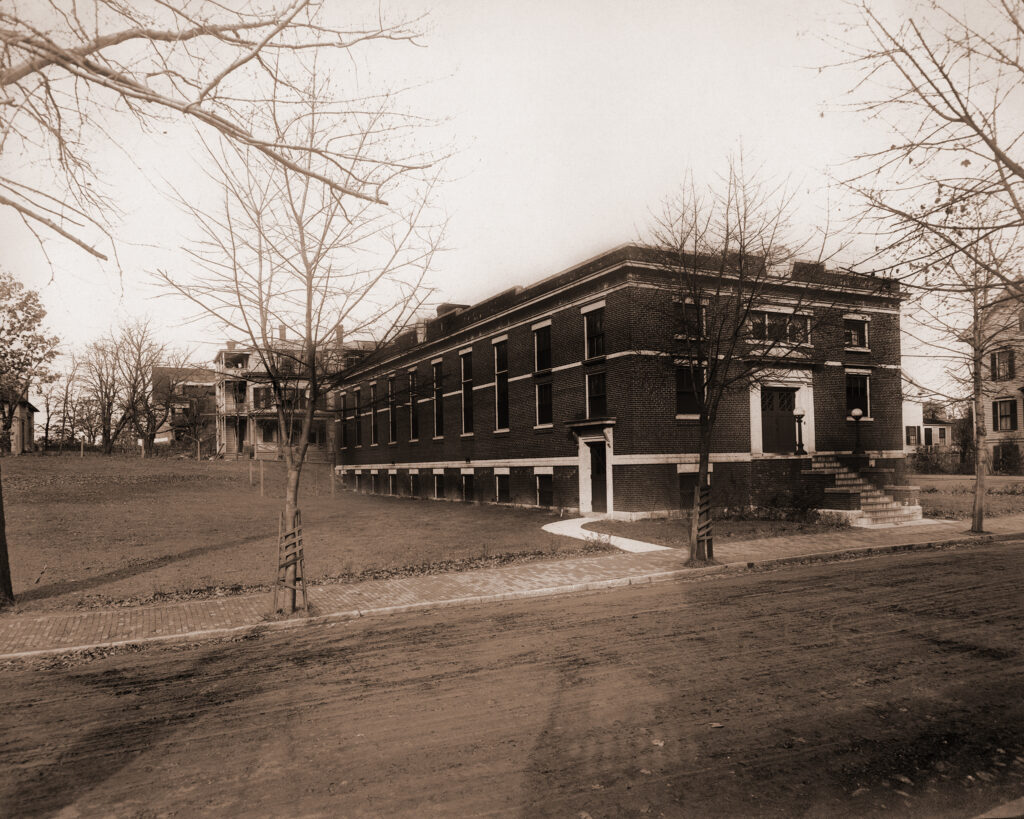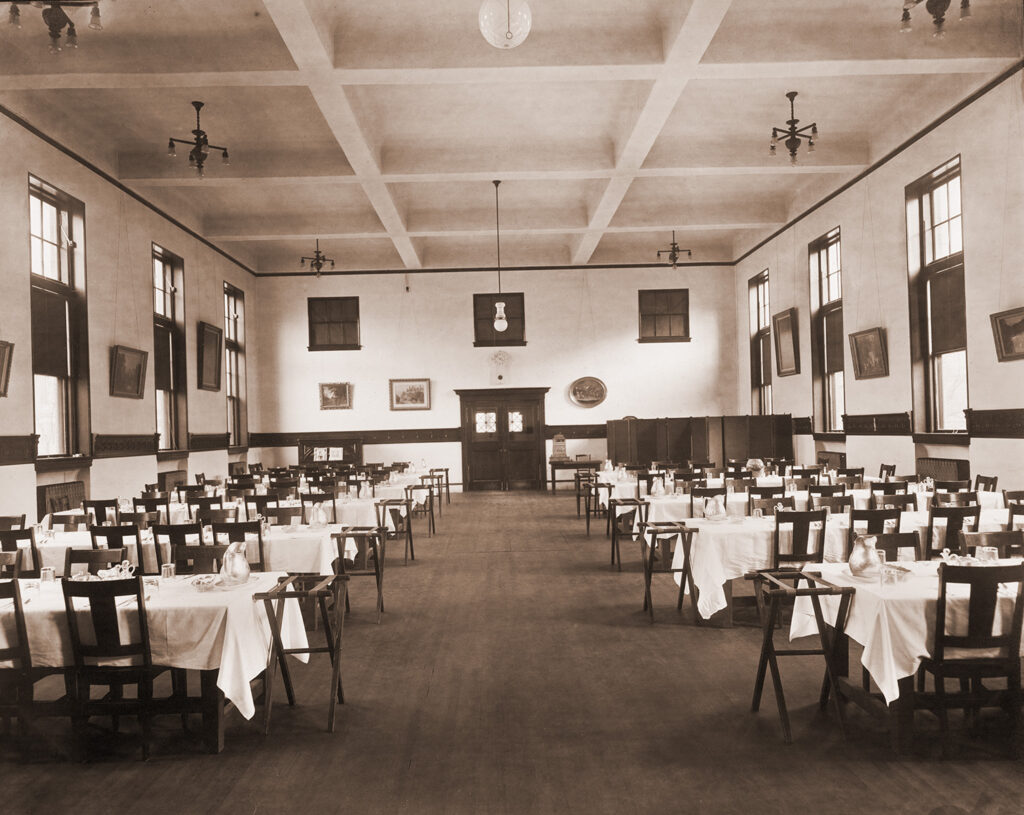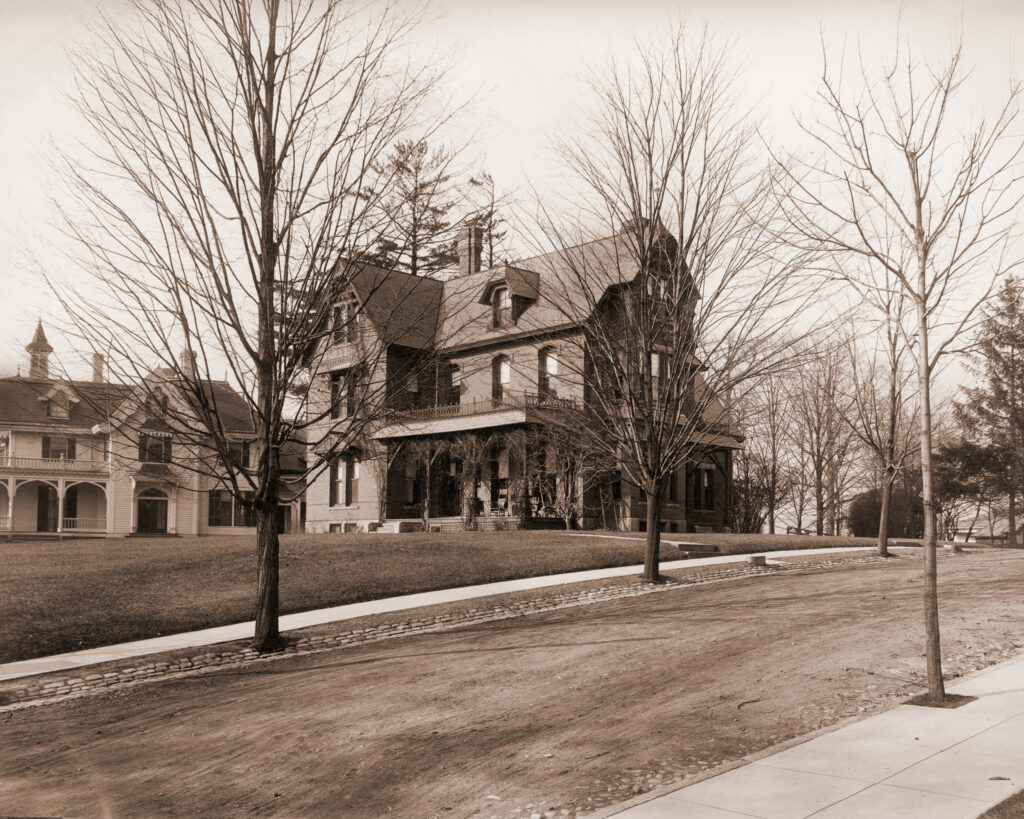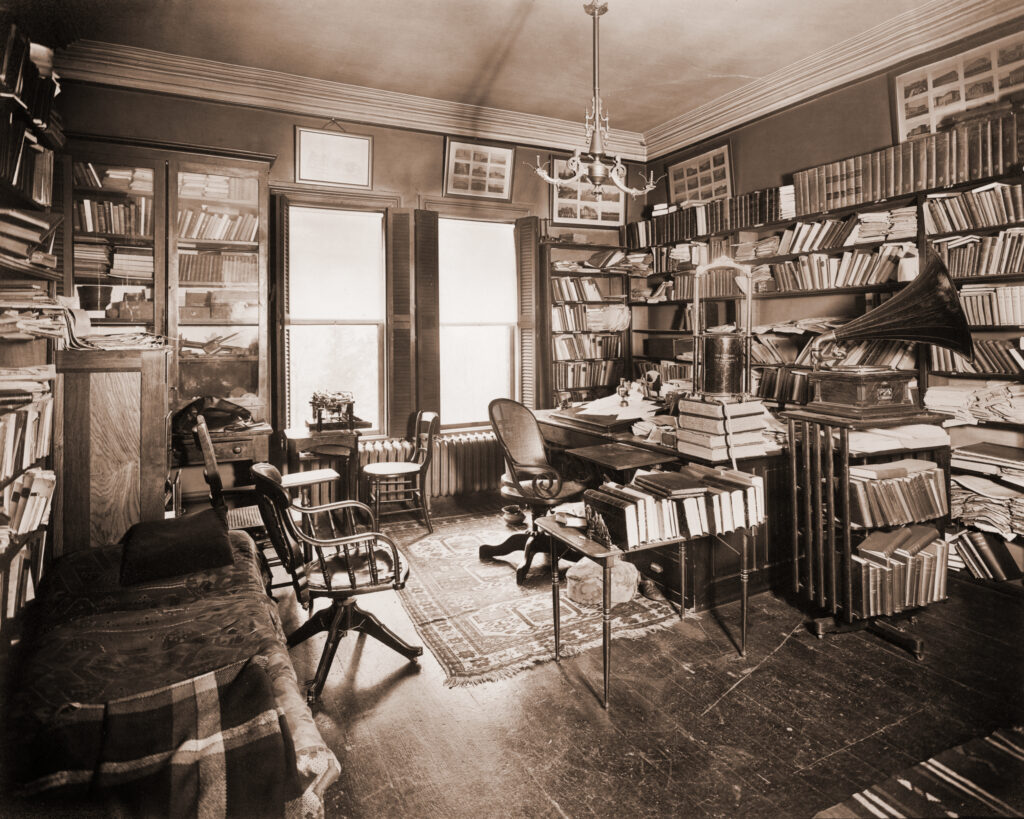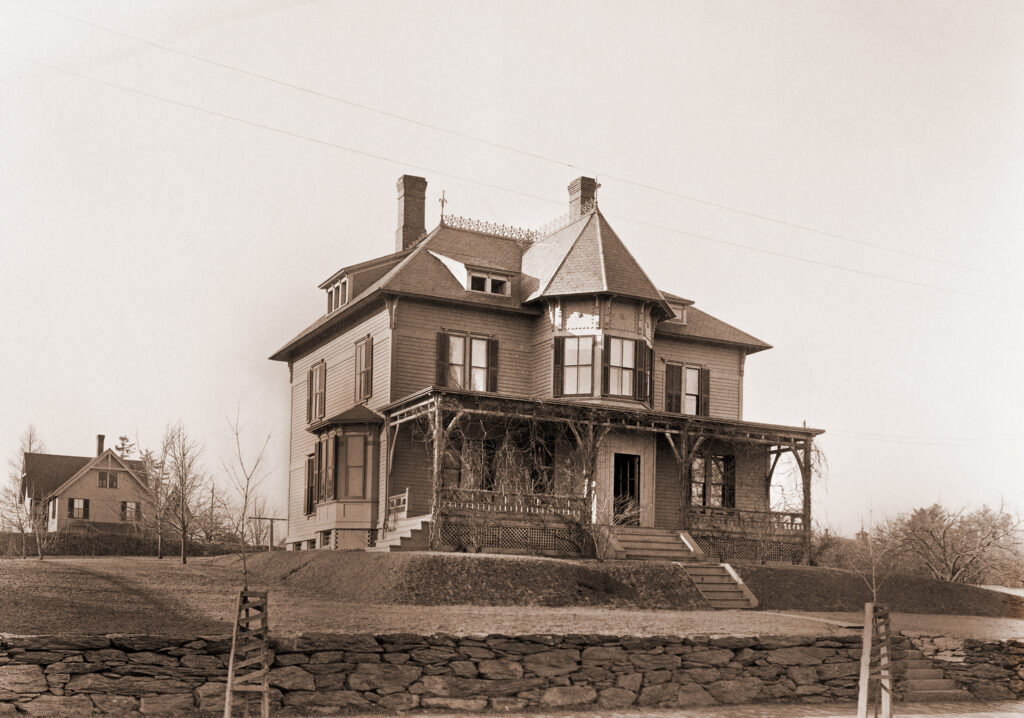In the Early Years
A Photo Retrospective of Clark University, 1893-1914
An exhibit, on the occasion of the Worcester Tercentennial, of images of a new institution striving to build its campus and establish an academic reputation
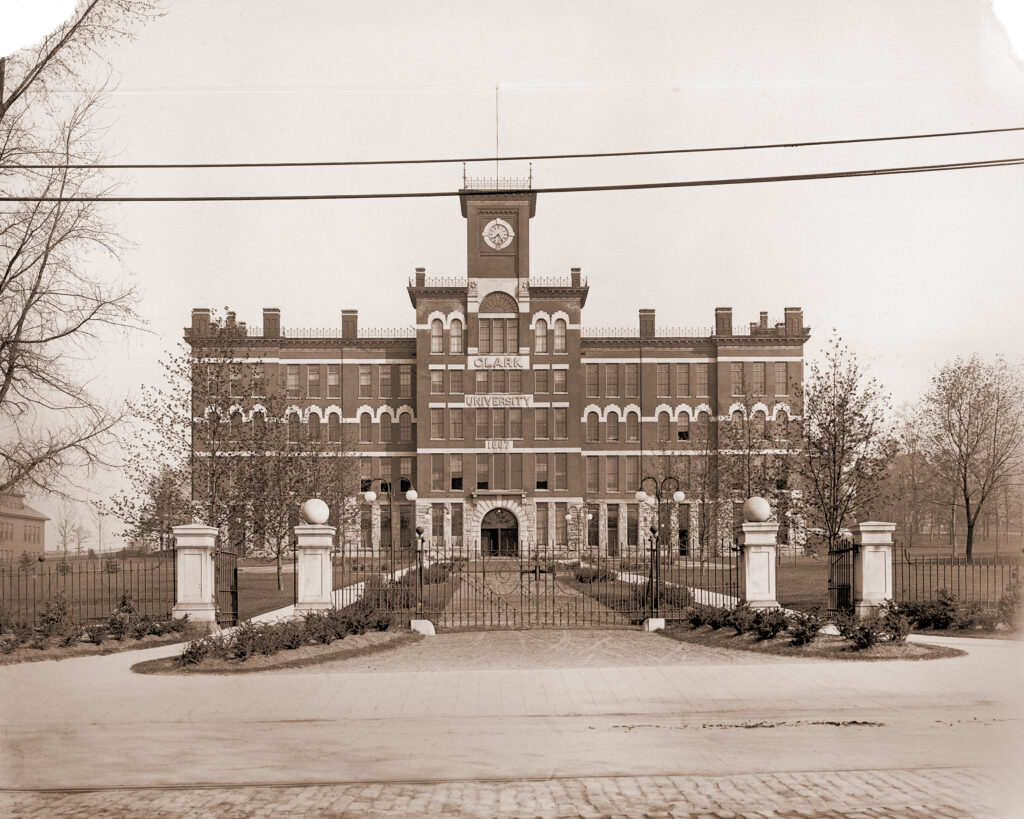
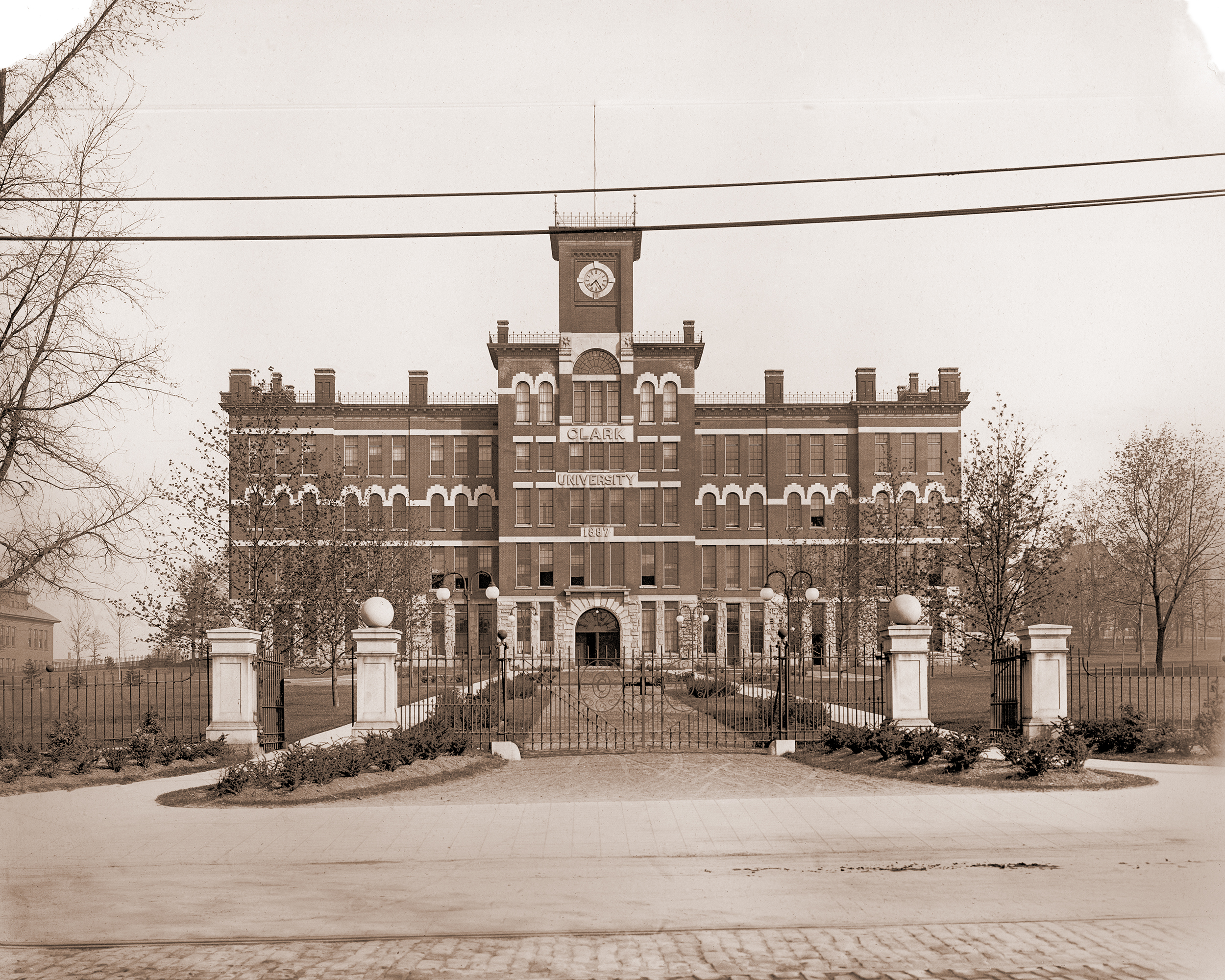
The Main Building (BA)
Jonas Clark Hall, initially known as simply the Main Building, was constructed from 1888-89. Seen here from Main Street, the iron gates of the campus as well as the trolley tracks in the street are also visible.
“The Civil War was still raging in September 1863 when the first horse-drawn trolley cars rolled down the streets of Worcester. By 1900, a system of light rail connected not only the neighborhoods within the city, but communities across Massachusetts and into neighboring states…At its height in 1916, the Worcester Consolidated Street Railway Co. was the largest in the state with 429 cars, more than 300 miles of track and 72.7 million fares. The first electric trolley cars were introduced to Worcester in 1891. The streetcars were a big improvement and service expanded rapidly. The system was a mishmash of different trolley and railroad companies that formed a transportation network across Massachusetts and into neighboring states.” All Aboard! The Heydey of Worcester Trolley Service, David DuBois (Worcester Sun, September 2, 2016)
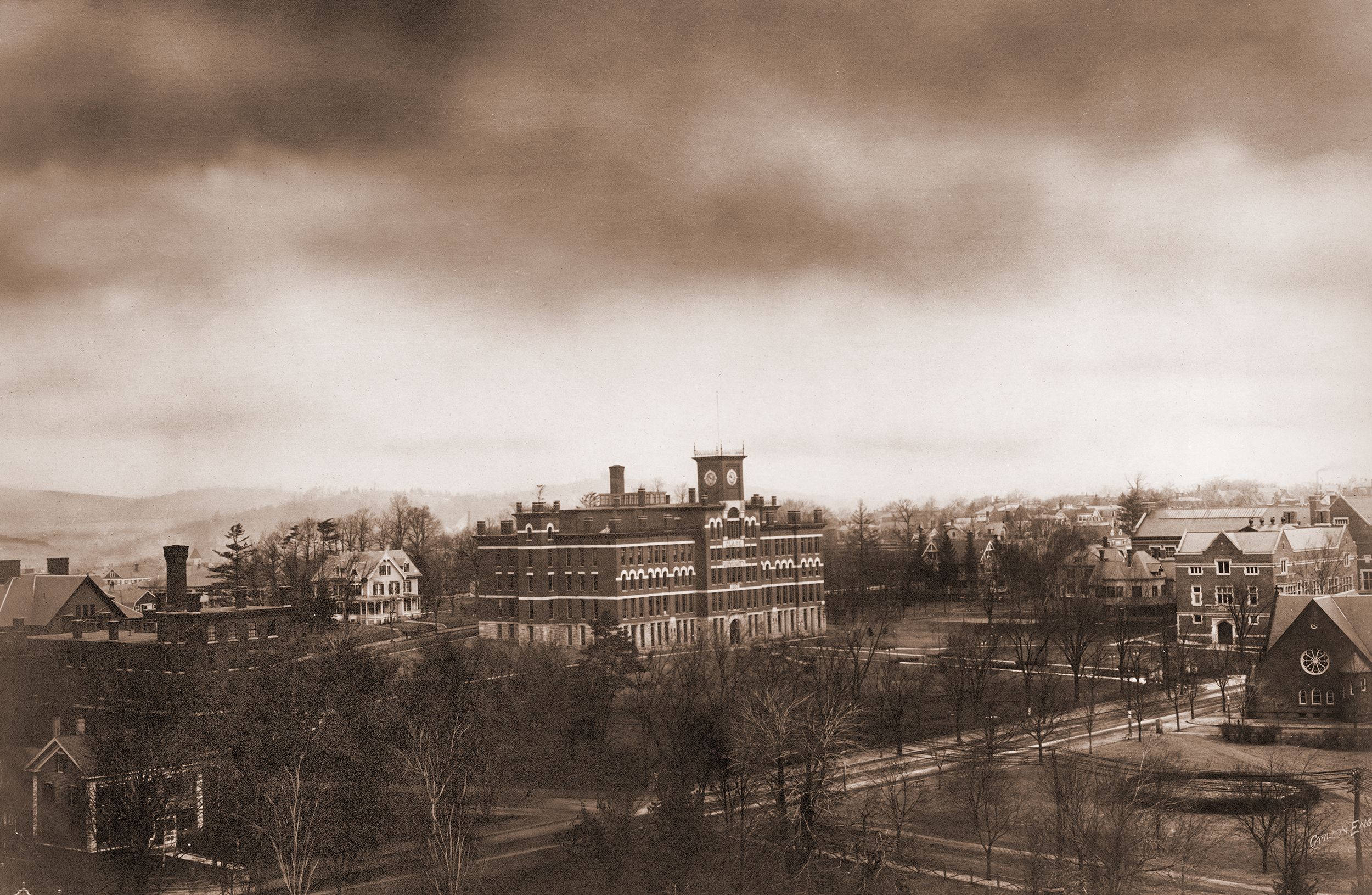
Main Building, aerial view (1893)
“Instead of the usual red tape and bureaucracy, at Clark the student got the encouragement to develop his or her individual interests in an atmosphere of absolute freedom of scholarly inquiry, and what Hall called ‘elbow–teaching’ in seminar and laboratory.” Clark University 1887–1987: A Narrative History by William A. Koelsch (p. 75)
In this panoramic view of the Clark campus from circa 1892, the Main Building (now called Jonas Clark Hall) is visible at the center with the chemical laboratories to the left (on the site of the current Sackler Science Center). To the right are the University Libraries (now the Geography Building and Jefferson Academic Center). Clark’s two-story dining hall (now Estabrook Hall with floors 3 & 4 added in 1924) is visible in the distance behind the Library. The President’s house is located just behind the Main Building on the slight hill where Goddard Library now stands.
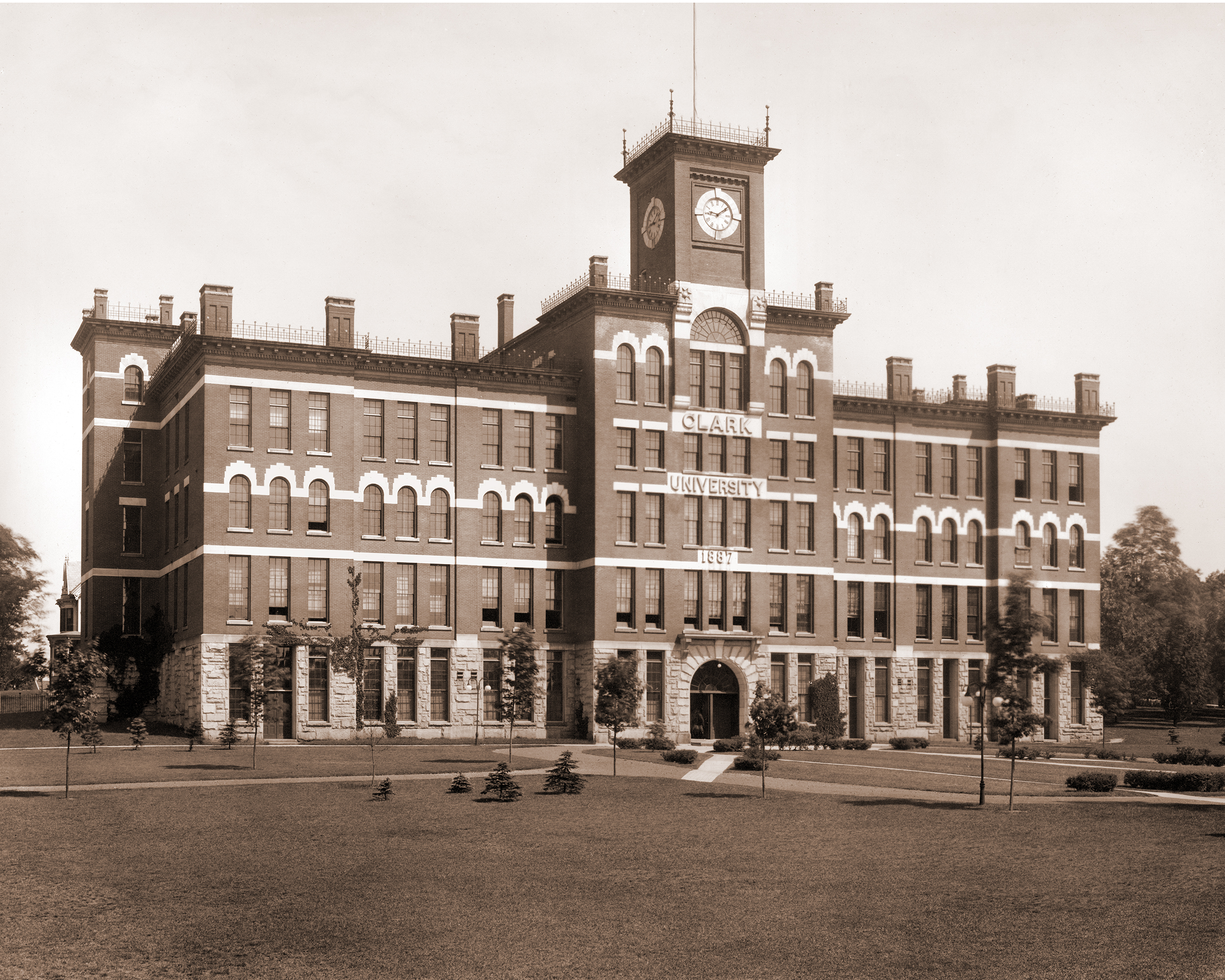
Jonas Clark Hall (1893)

Dr. Hall’s Office (Oct. 1914, BA)
“Jonas Clark’s original campus plan, which had been released at the time of the announcement of the petition for a university charter two years before (1885), had called for a 500-foot long academic structure stretching along Woodland Street between Downing and Maywood Streets, plus a smaller dormitory.” Clark University 1887–1987: A Narrative History by William A. Koelsch (p. 22)
An interior space in the Main Building (now Jonas Clark Hall), the office of Clark’s first president, G. Stanley Hall.

Hipp Chronoscope and Cattell Fall-Chronoscope in use for measuring Reading times, H. A. Aikins (left), and H.A. Daniels (right) (1893)
“Psychology, which Hall saw as the general science of man and which, at Clark included neurology, anthropology, philosophy, and education under its broad rubric,” according to Clark University 1887–1987: A Narrative History by William A. Koelsch (p. 29). Herbert Austin Aikins (left) and H.A. Daniels (right) were graduate students in Psychology at Clark studying the speed of cognitive processes.
This image documents a reaction-time experiment, using a Hipp Chronoscope and a Cattell Gravity Chronometer. The time taken for the subject to begin reading a word displayed in the chronometer, at left, is being determined. The Hipp Chronoscope is started by dropping of the screen. It is stopped by the subject reading the word aloud, which opens the lip key in the subject’s mouth. (For details, see Cattell at Penn and M. M. Socal, “An Education in Psychology,” p. 323.)
A chronoscope (or chronometer) is a sophisticated clock that measures minute intervals of time. The one pictured here was designed by Matthäus Hipp, a German clockmaker who settled in Switzerland during the political turmoil of 1848. Wilhelm Wundt, an influential professor at the University of Leipzig, recommended the use of Hipp Chronoscopes for psychological and physiological experiments in his textbook, Grundzüge der physiologischen Psychologie (1874).As American academics began following Wundt’s work, chronoscopes were found on campuses across the country.
In 1886, American James McKeen Cattell, an Assistant in the Psychological Laboratory, University of Leipsic. “[sic], improved upon Hipps design and published his results in “The Time Taken Up By Cerebral Operation” [Mind, (11): 220-242]. The Fall Chronometer generated a constant period of time by letting a mass fall through a measured distance. The instrument pictured here derives from the Gravity Chronometer invented by Cattell in 1886. Researchers used the Fall Chronometer to help calibrate the Hipp Chronoscope. There is a Hipp Chronoscope on display outside Archives and Special Collections at the Robert H. Goddard Library.
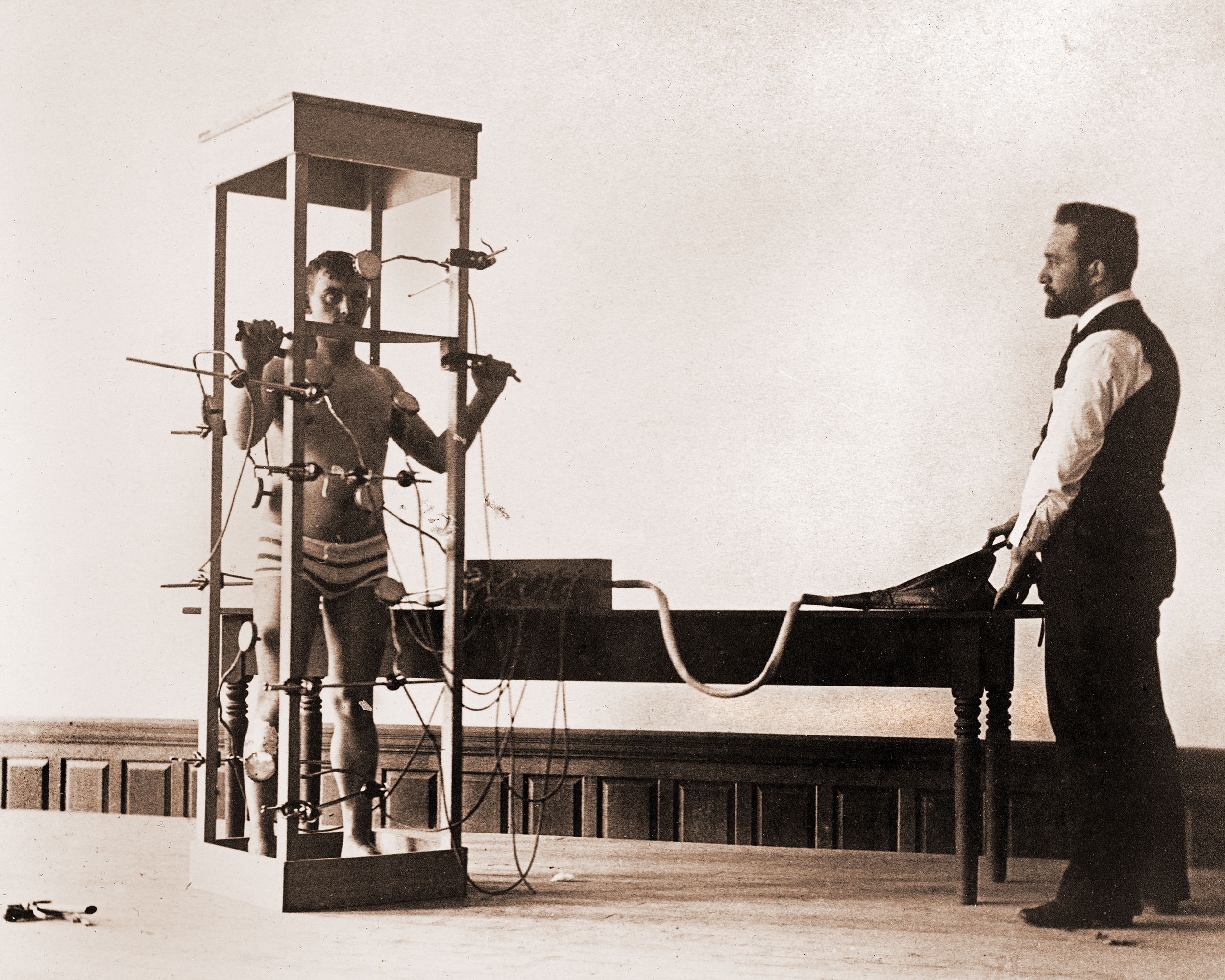
Apparatus for Simultaneous Touches
Thaddeus Bolton (left); W.O. Krohn (right) (1893)
“The central focus of the Clark psychological laboratories under Baird’s (director of Clark laboratories starting in 1909) direction was what he called ‘systematic experimental introspection,’ primarily visual sensation and space–perception,” according to Clark University 1887–1987: A Narrative History by William A. Koelsch (p. 55).
Thaddeus L. Bolton, a graduate student in psychology at Clark University who received a Ph.D. in 1895, wrote the first doctoral thesis on a topic closely related to music education. The thesis, titled “Rhythm,” describes an experimental study of the reactions of thirty subjects to sounds occurring at different speeds and intensities and with different durations and patterns of accentuation. Bolton’s work on rhythm is among the earliest on music by an experimental psychologist.
Bolton held positions at Clark University as a “Scholar in Psychology” in 1890-91; an “Assistant and Fellow” in psychology in 1891-92; and as a “Demonstrational Fellow” in psychology in 1892-93 during the time this photo was taken. He appears in another of the experimental psychology Black Album photographs entitled, “Rotation Table for Study of Dizziness and Sensation from Semi-Circular Canals” overseen by Clark Prof. Edmund C. Sanford.
[see Humphreys, Jere T. (1990). “Thaddeus Bolton and the First Dissertation in Music Education.” Journal of Research in Music Education. 38 (2): 138–148]
William O. Krohn (Ph.D., Yale, 1889) was a faculty member in Psychology at Clark and one of a “group of rugged pioneers” who met at Clark University in Worcester, MA, on July 8, 1892, at the invitation of Clark’s President, G. Stanley Hall, to discuss the feasibility of forming what became the American Psychological Association.
[see Fernberger, Samuel W. (1932). “The American Psychological Association: a Historical Summary, 1892-1930.” Psychological Bulletin (29): 1-89]. While at Clark, Krohn published Practical Lessons in Psychology (1895), and a bit later, when he moved to Yale University, he published Graded Lessons in Hygiene (1902), a teacher’s guide with his own Chicago-based publishing company.

Psychology Lab, Judgment of Comparison, Lifted Weights (BA)
The people in this image from circa 1913 are unidentified. However, given the research topic, the figure on the left (seemingly supervising the experiment) may be Professor Samuel W. Fernberger, who in 1914 published a paper entitled “The Effect of the Attitude of the Subject upon the Measure of Sensitivity” [see The American Journal of Psychology, (25) 4 (Oct., 1914): 538-543.] Born in Pennsylvania, Fernberger received his Ph.D. in Psychology from the University of Pennsylvania in 1912. He served as professor at Clark University for eight years, and then at the University of Pennsylvania starting in 1920. He is best known for his work in psychophysics, sensation, perception, and the history of psychology.
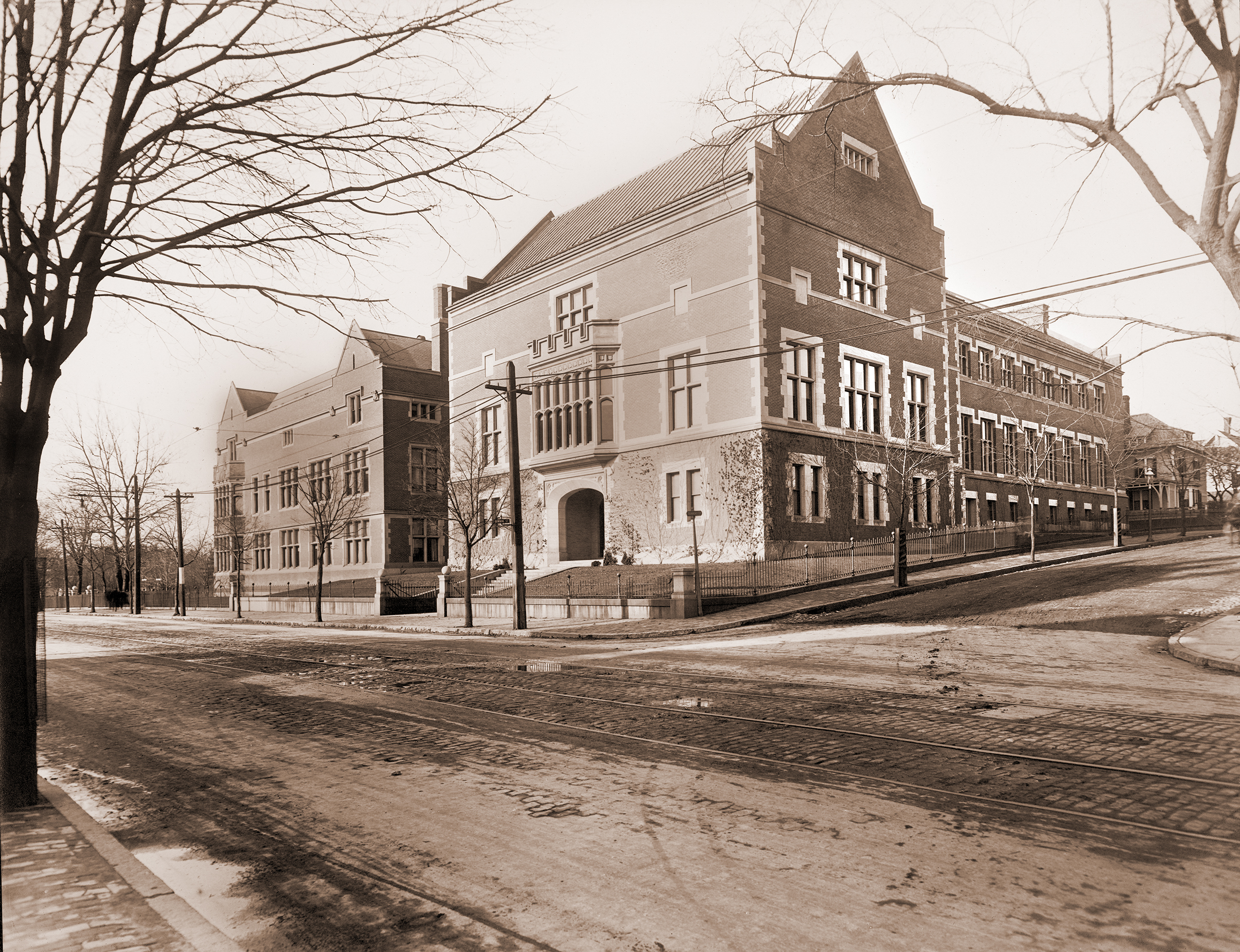
Library Buildings (BA)
“In addition, the student found a library so well–endowed that any book, in any language and regardless of the cost, would be ordered on request. Under Jonas Clark’s will as finally settled, the library’s separate endowment was augmented by one-quarter of the residual estate, for a total of about $800,000, probably the largest independent endowment of any university library in the United States at that time…In addition, in his will, Jonas Clark (1815-1900) had provided $150,000 for the construction of a new library building which would also house his art collection. It was English Collegiate Gothic in style, and had a main reading room (since destroyed) modelled after that of Trinity College…The new structure had room enough to allocate an office–sized alcove and library table as an individual work-space to each student or faculty member requesting one.” Clark University 1887–1987: A Narrative History by William A. Koelsch (p. 75-76)
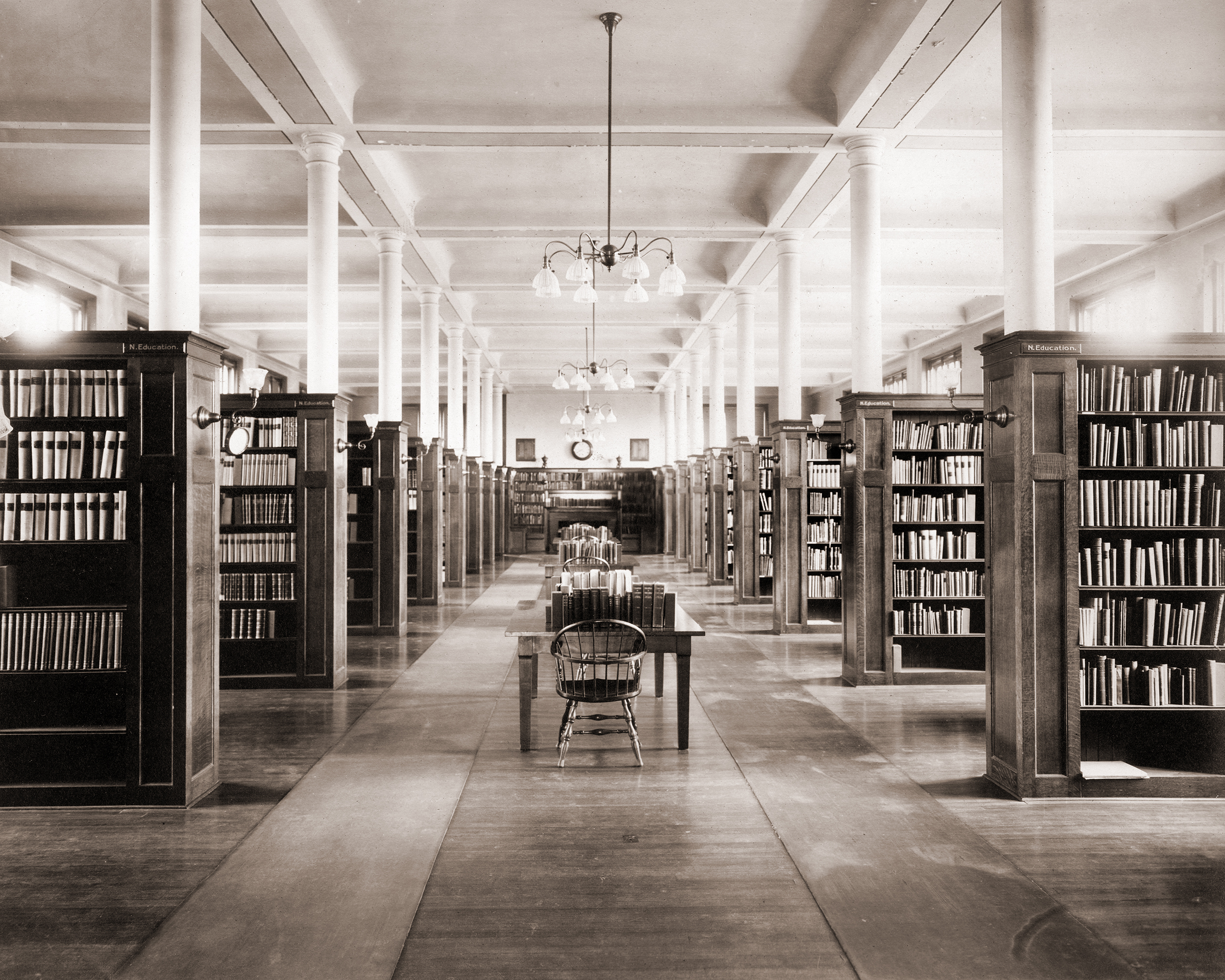
University Library, Main Room (BA)
The buildings we now know as Geography and the Jefferson Academic Center were originally built to house the University Libraries. Pictured here is a view of the main reading room.
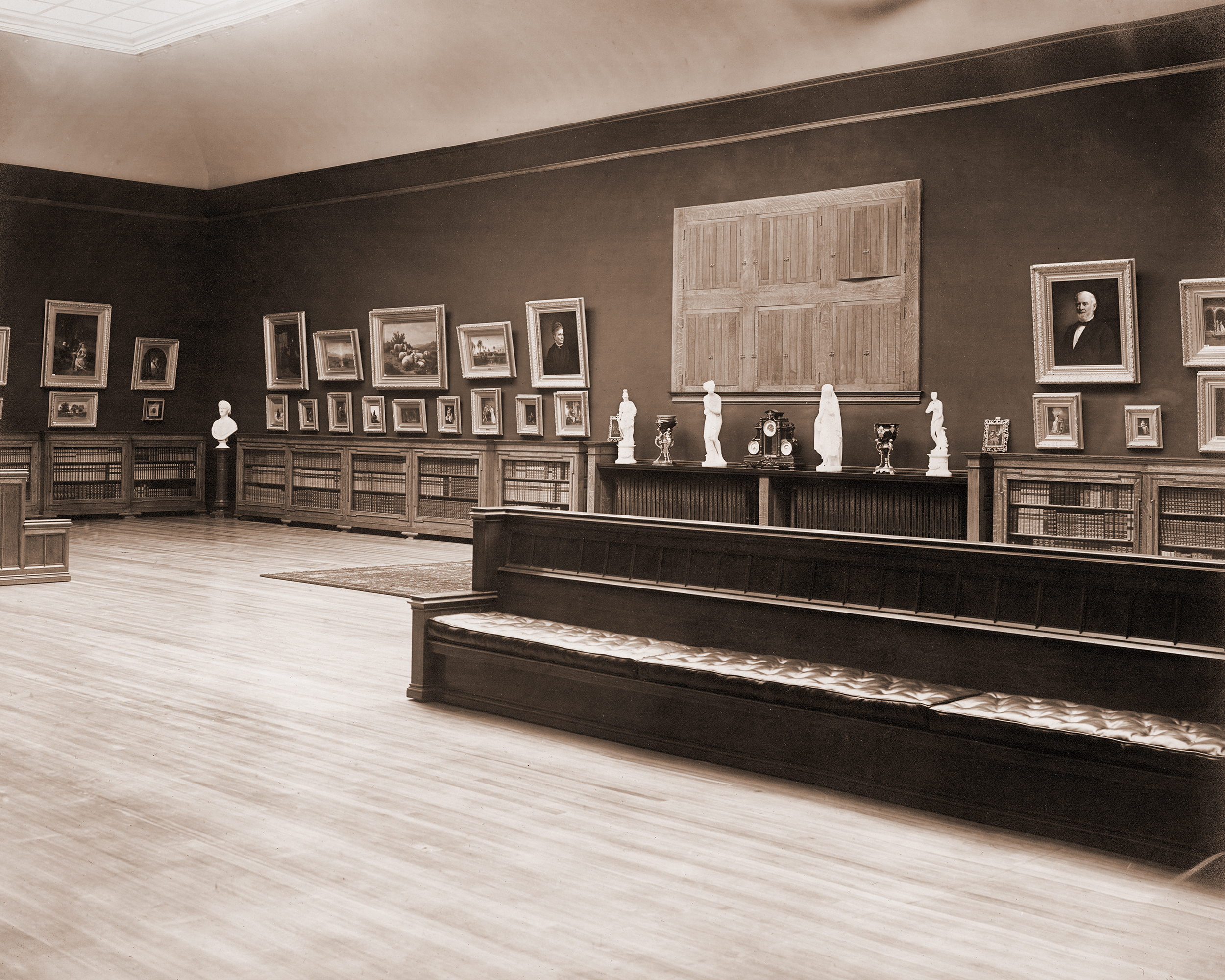
Art Gallery (BA)
“After Mrs. Clark’s death the Clark collection of paintings, sculpture, and rare books was installed in a skylighted gallery on the top floor, a space used for important public ceremonies.” Clark University 1887–1987: A Narrative History by William A. Koelsch (p. 77)
The Art Gallery in the Library is where Sigmund Freud delivered his famous Clark lectures in 1909.
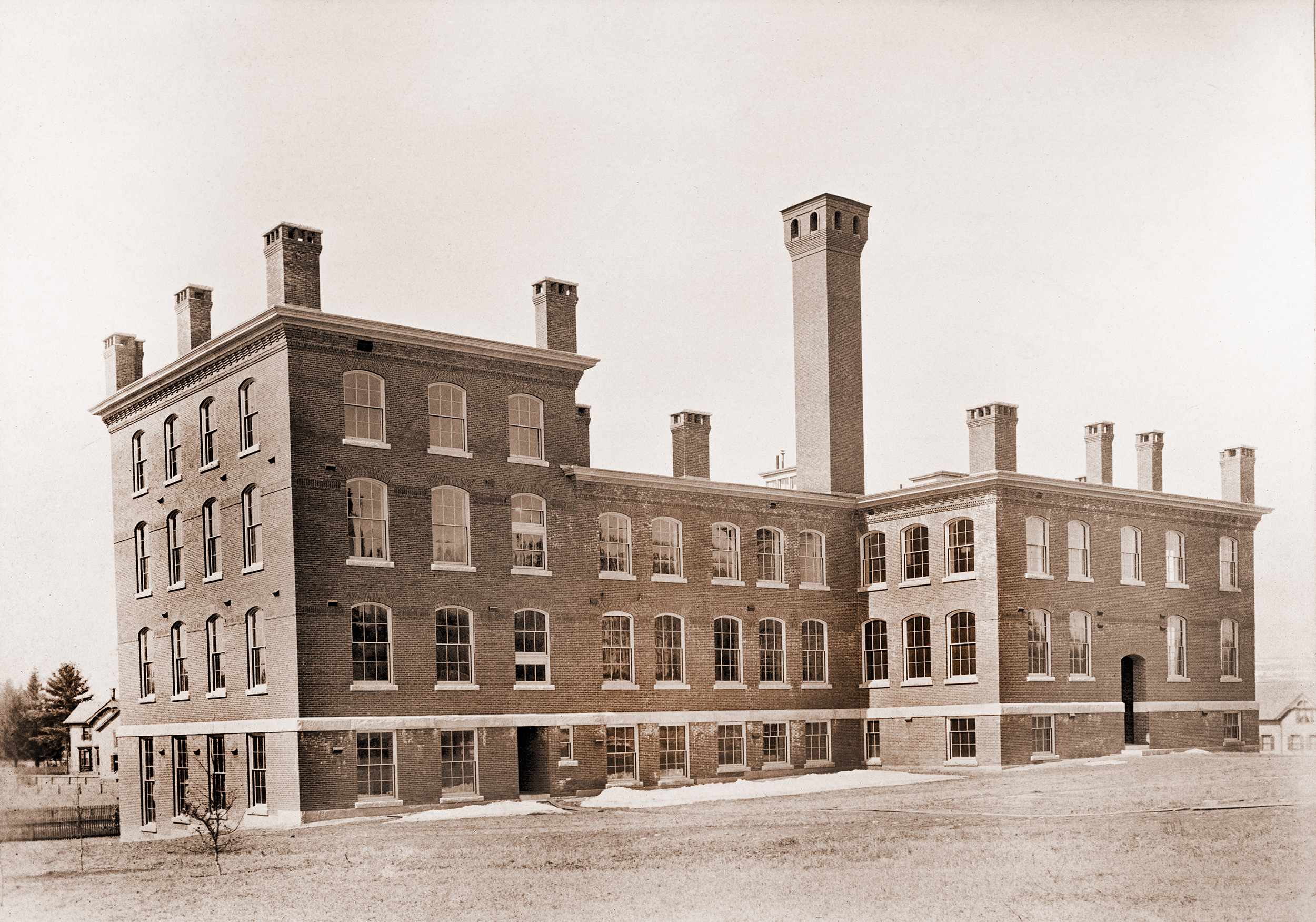
Chemical Building, View 1 (1893)
“The second building, a fire-resistant chemistry research laboratory, begun in the spring of 1888 and probably based on floor plans of the laboratory buildings Clark had seen in Europe, was finished on the exterior and well-advanced within. At (G. Stanley) Hall’s suggestion the foundations had been laid for a third building intended for a biology laboratory, though this last was never to be constructed.” Clark University 1887–1987: A Narrative History by William A. Koelsch (p. 22)
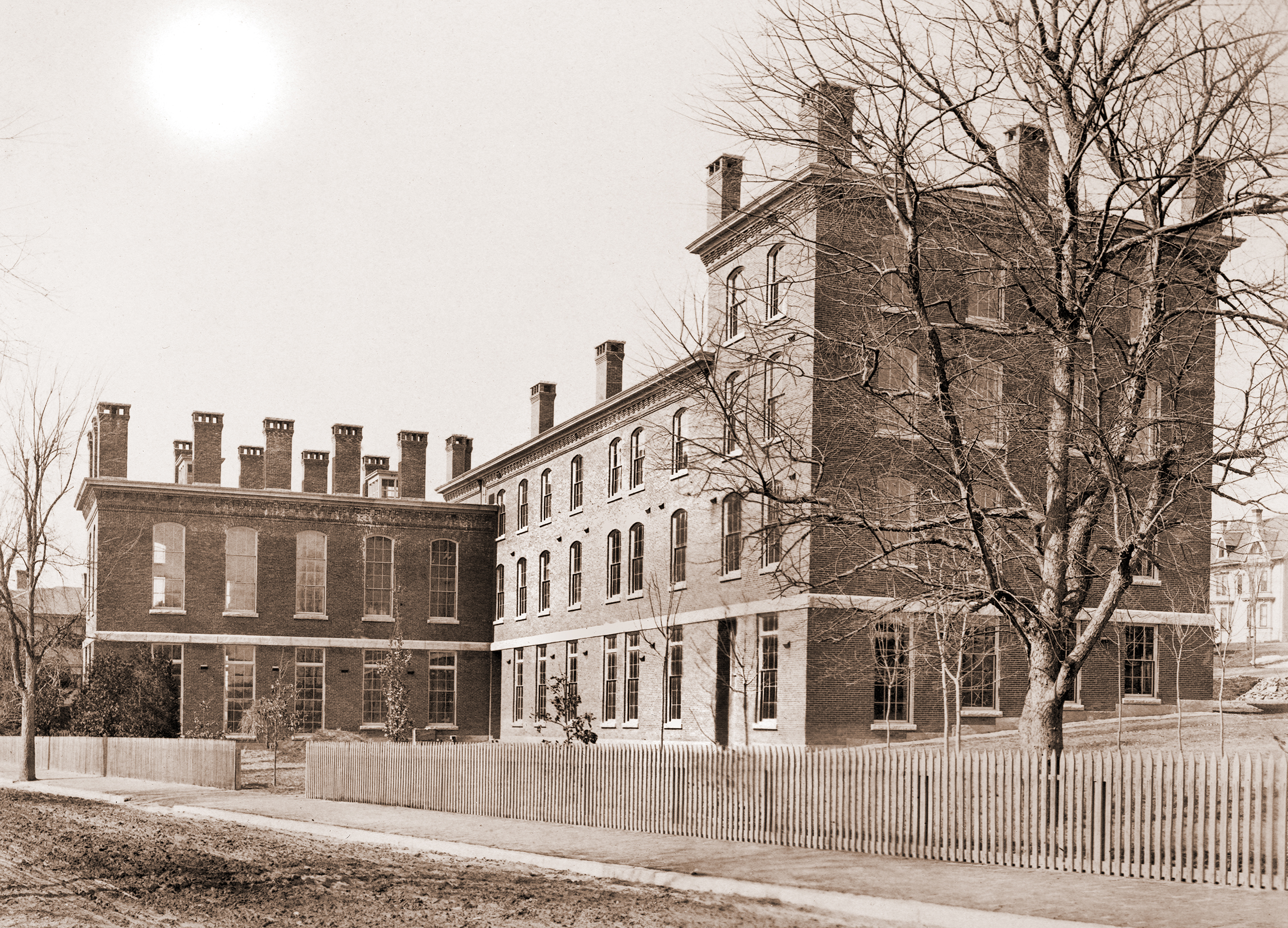
Chemical Building, View from the S.W. (1893)
The Chemistry Building and Laboratories were housed in a building just south of the Main Building.
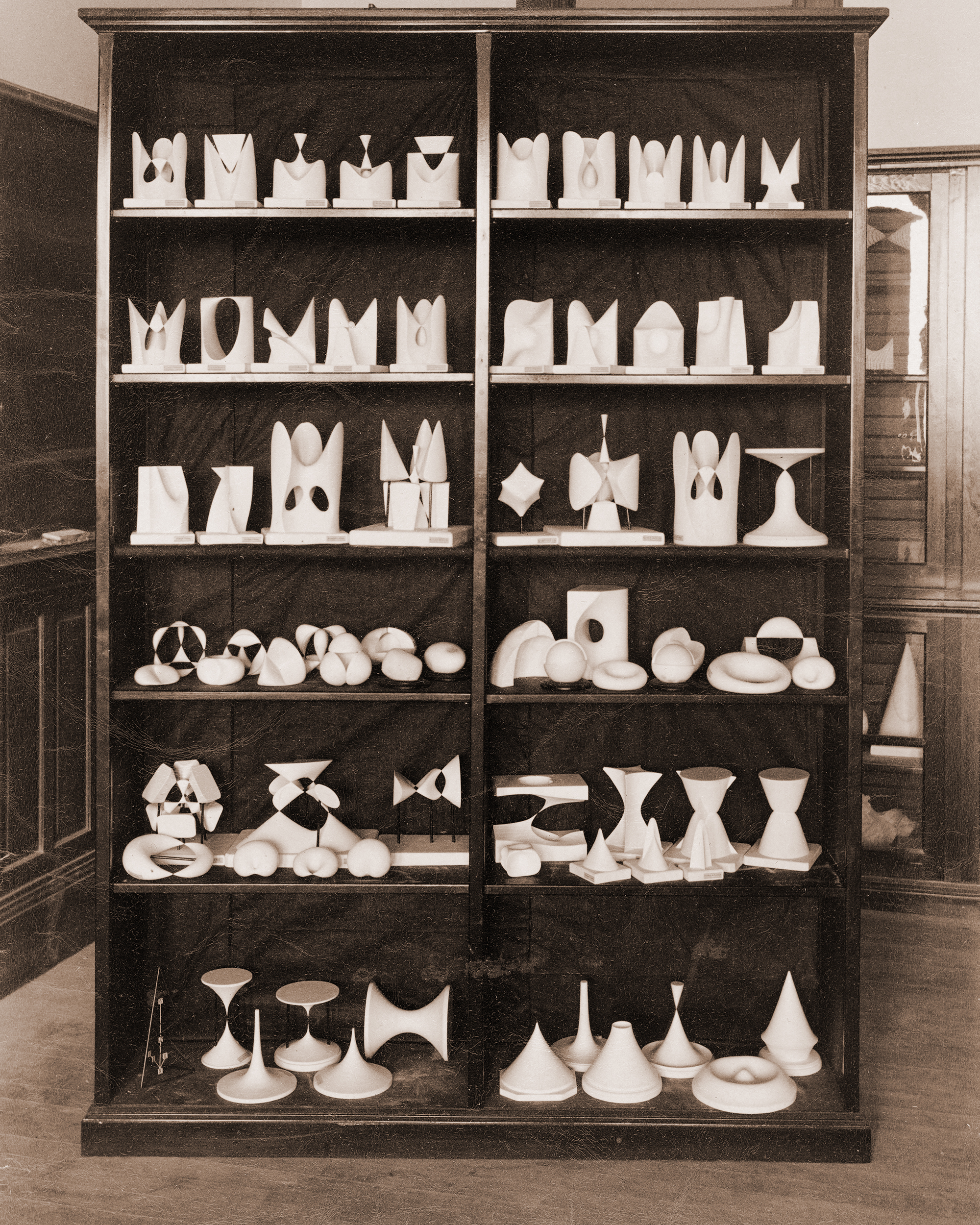
Algebraic surfaces of the Third, Fourth, and Higher Orders. Rotational Surfaces (1893)
Shapes for teaching algebraic formulae.
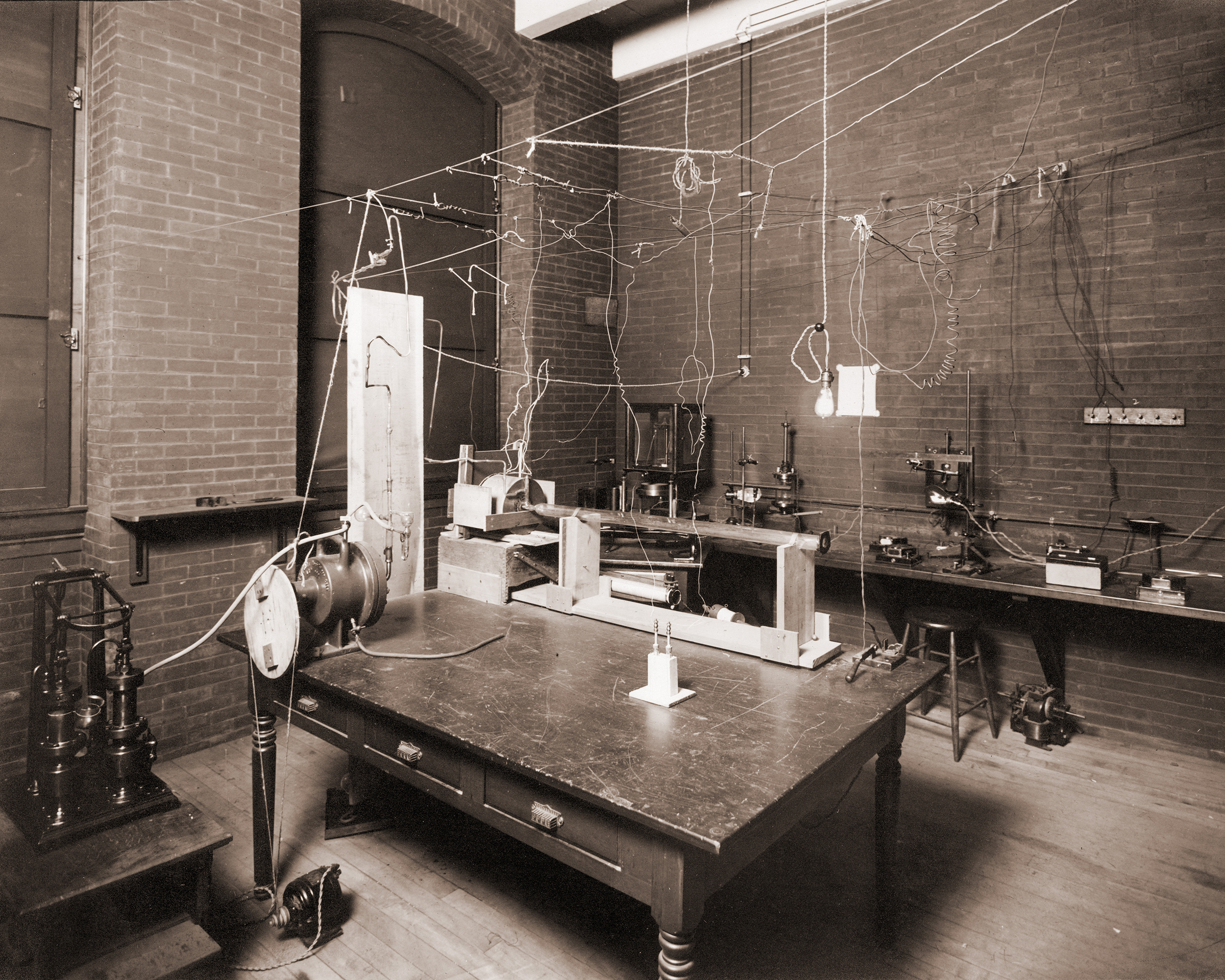
Physics Lab, Apparatus for Magnetic Rays (BA)
“Second (as departments introduced at Clark) came physics, directed by Albert M. Michelson…He was born in Poland of Jewish parentage, yet was appointed as professor and department head at Clark at a time when German and American universities generally (though not Hopkins) excluded Jews from their faculties except perhaps as teachers of Semitic studies. Michelson had already done extraordinary work in the measurement of light waves while at Case School of Applied Science, devising the interferometer, and also the classic Michelson-Morely ether-drift experiment, which had first demonstrated the erroneousness of the 19th century belief that light waves travelled through a medium called ether.” Clark University 1887–1987: A Narrative History by William A. Koelsch (p. 25)
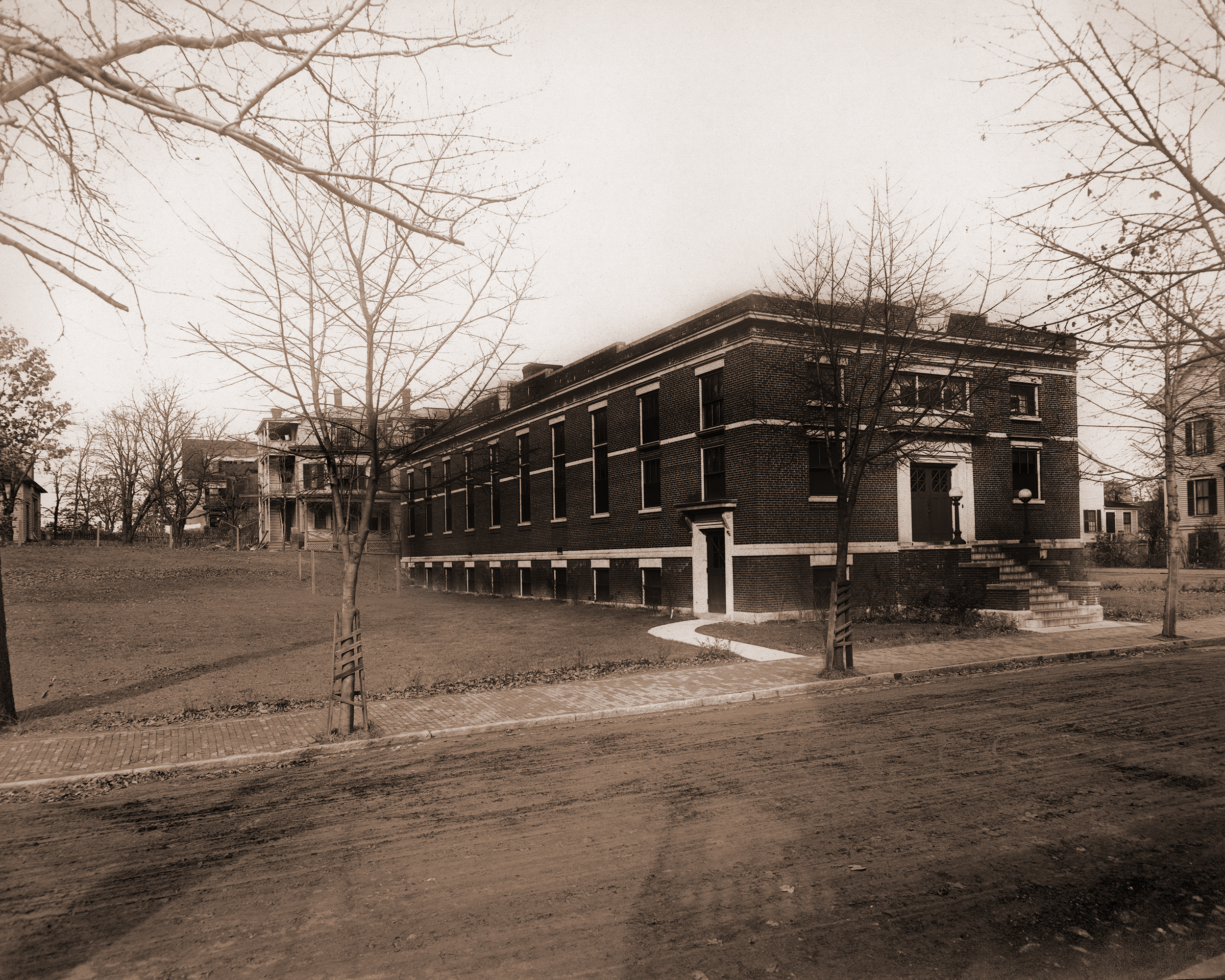
College Dining Hall (Nov. 1912)
“The pool of undergraduate students remained largely local, and the construction of a two-story dormitory above the university dining hall (now renamed Estabrook Hall) in 1924 did not appreciably change that condition. Undergraduate enrollments did not exceed 200 until 1925.” Clark University 1887–1987: A Narrative History by William A. Koelsch (p. 151)
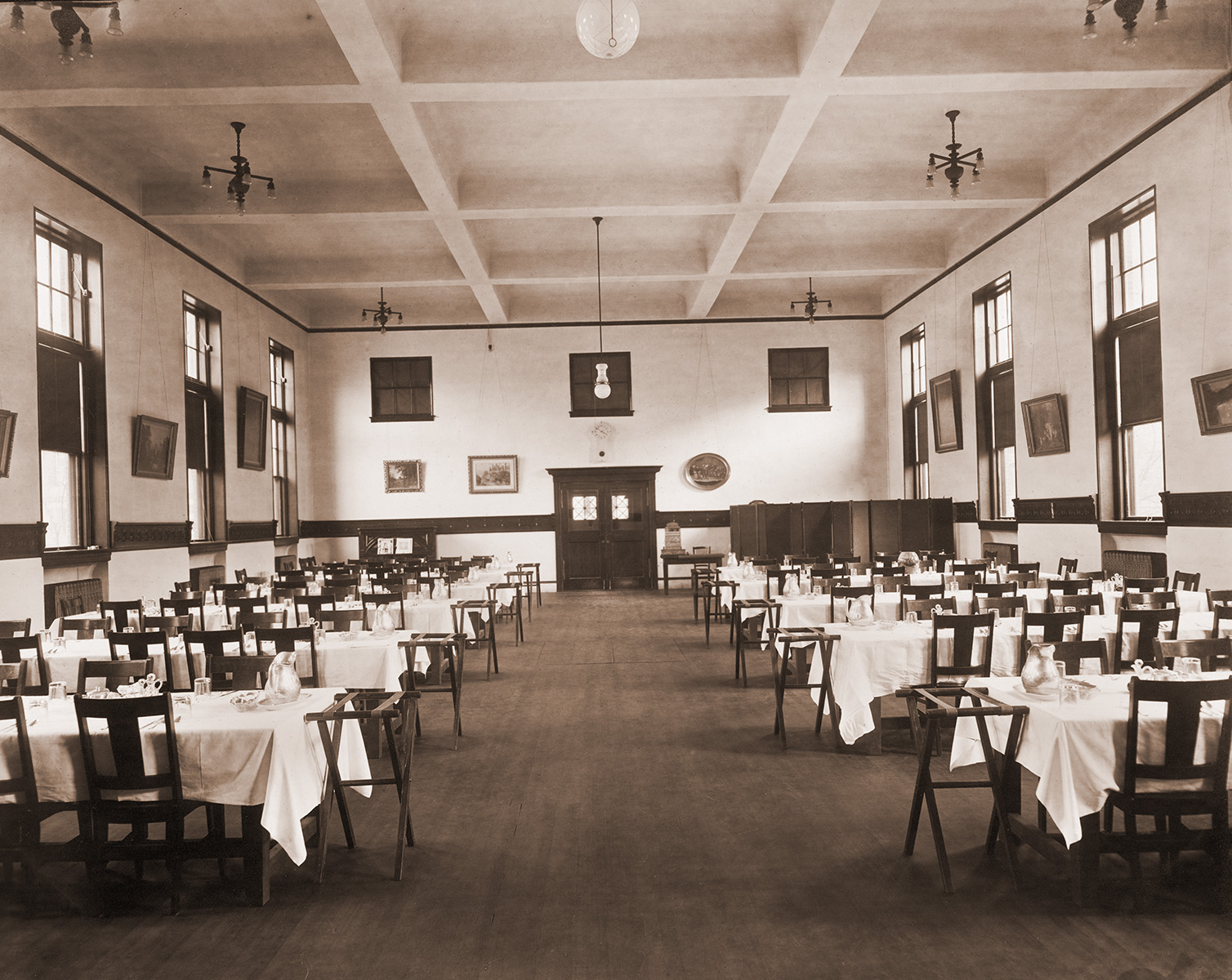
College Dining Room, looking East (BA)
Interior view of the university dining hall from Nov., 1912 — before it was converted into a dormitory.
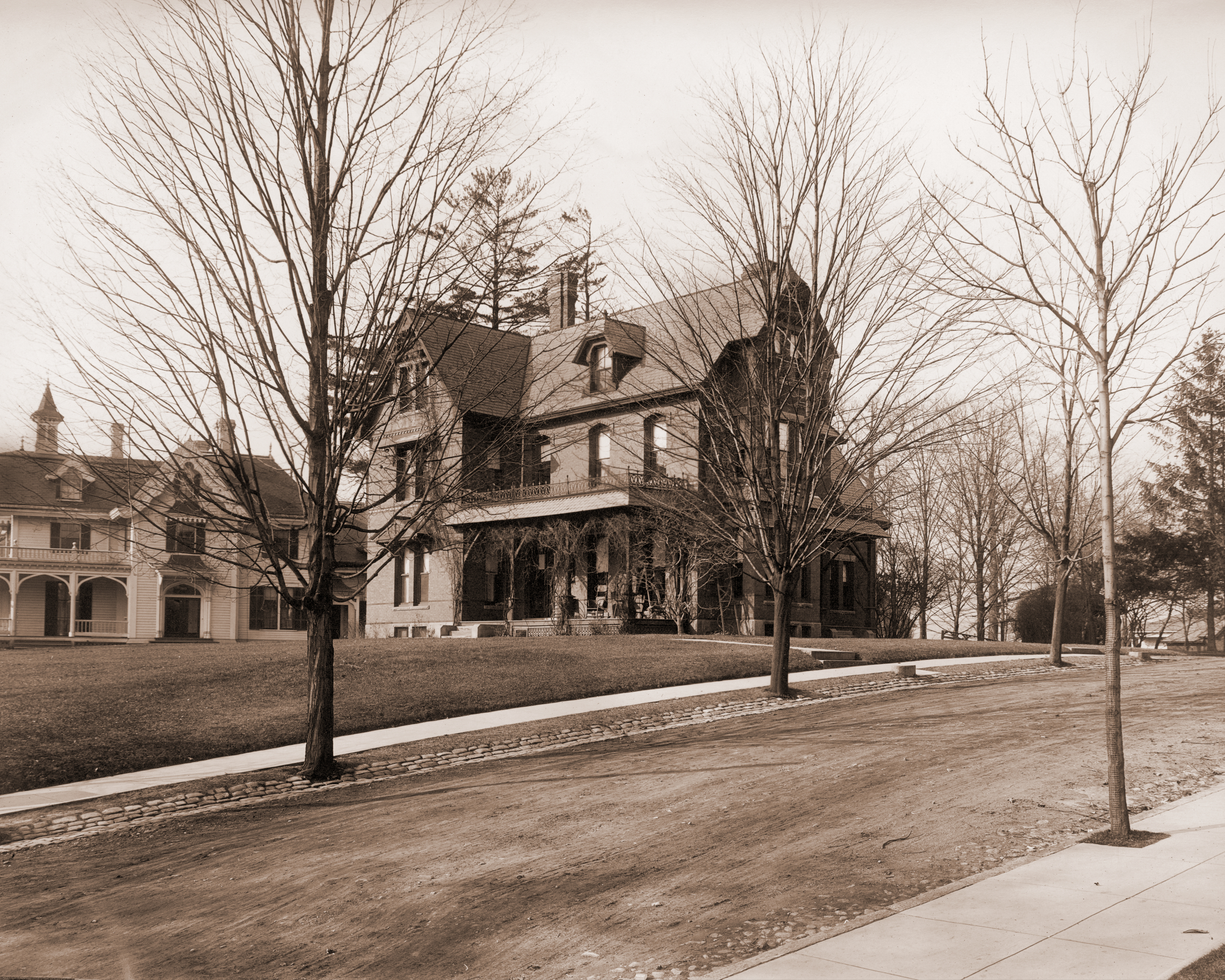
Dr. Hall’s House, looking West (BA)
“Hall’s most effective teaching was done in his famous Monday evening seminar. About 7:15pm each Monday, all students in philosophy, psychology and education, and perhaps also faculty and invited guests, would gather in Hall’s home across the street from the campus. …Lewis Terman, recalled the sessions, ‘I always went home dazed and intoxicated, took a hot bath to quiet my nerves, then lay awake for hours rehearsing the drama and formulating all the clever things I should have said and did not.’” Clark University 1887–1987: A Narrative History by William A. Koelsch (p. 53)
Dr. Hall’s House was located near the current site of the Goddard Library.
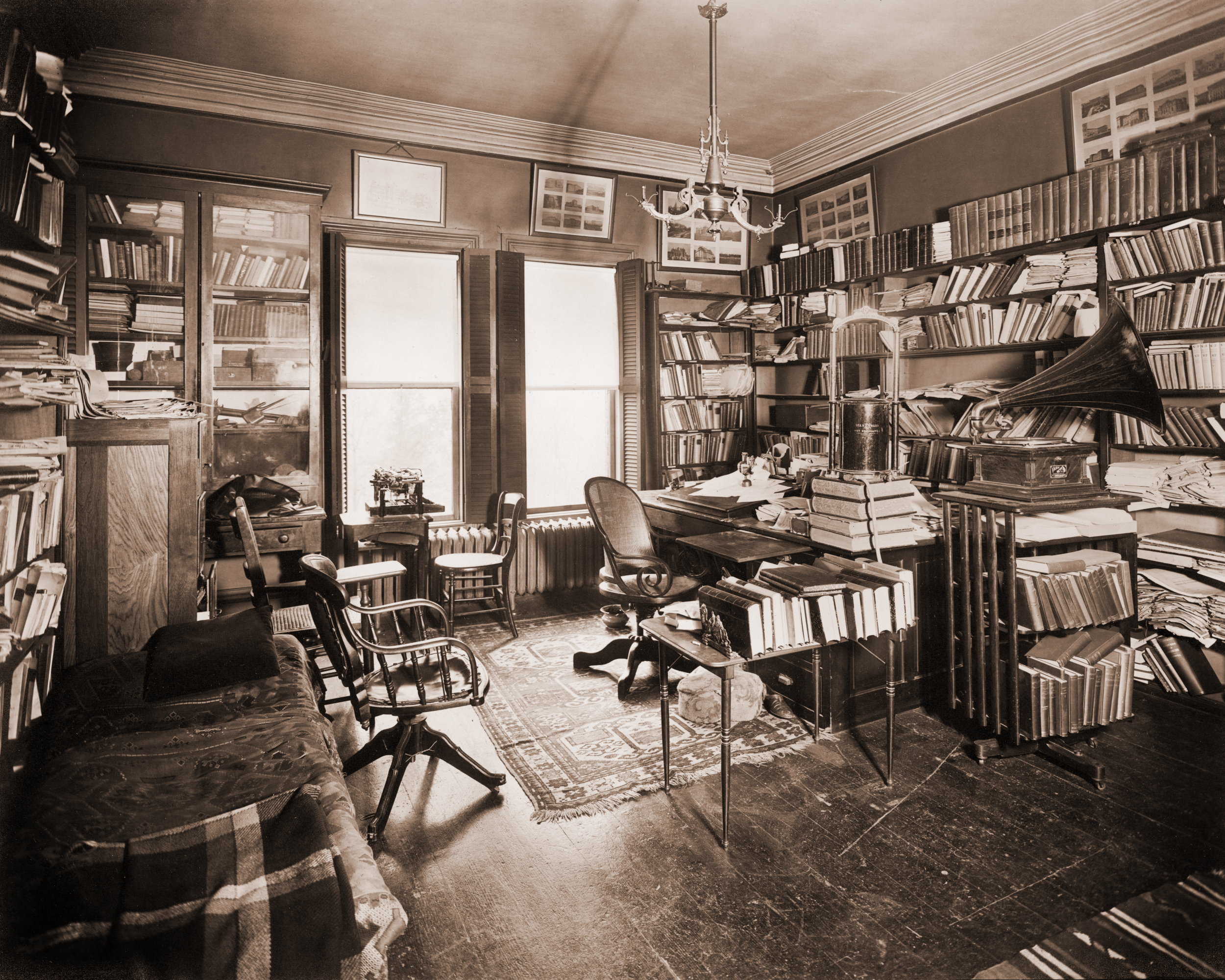
The Study, interior of Dr. Hall’s house (BA)
“’He (G. Stanley Hall, Clark’s first president and founding president of the American Psychological Association) has been the cause of more writing and research than any other three men in the field’…In the nearly three decades between 1892 and his retirement in 1920, Hall lectured at 11 A.M. each weekday (including Saturday lectures for teachers) in philosophy, genetic psychology, and education.” Clark University 1887–1987: A Narrative History by William A. Koelsch (p. 52)
A view of G. Stanley Hall’s personal study in his home on campus.
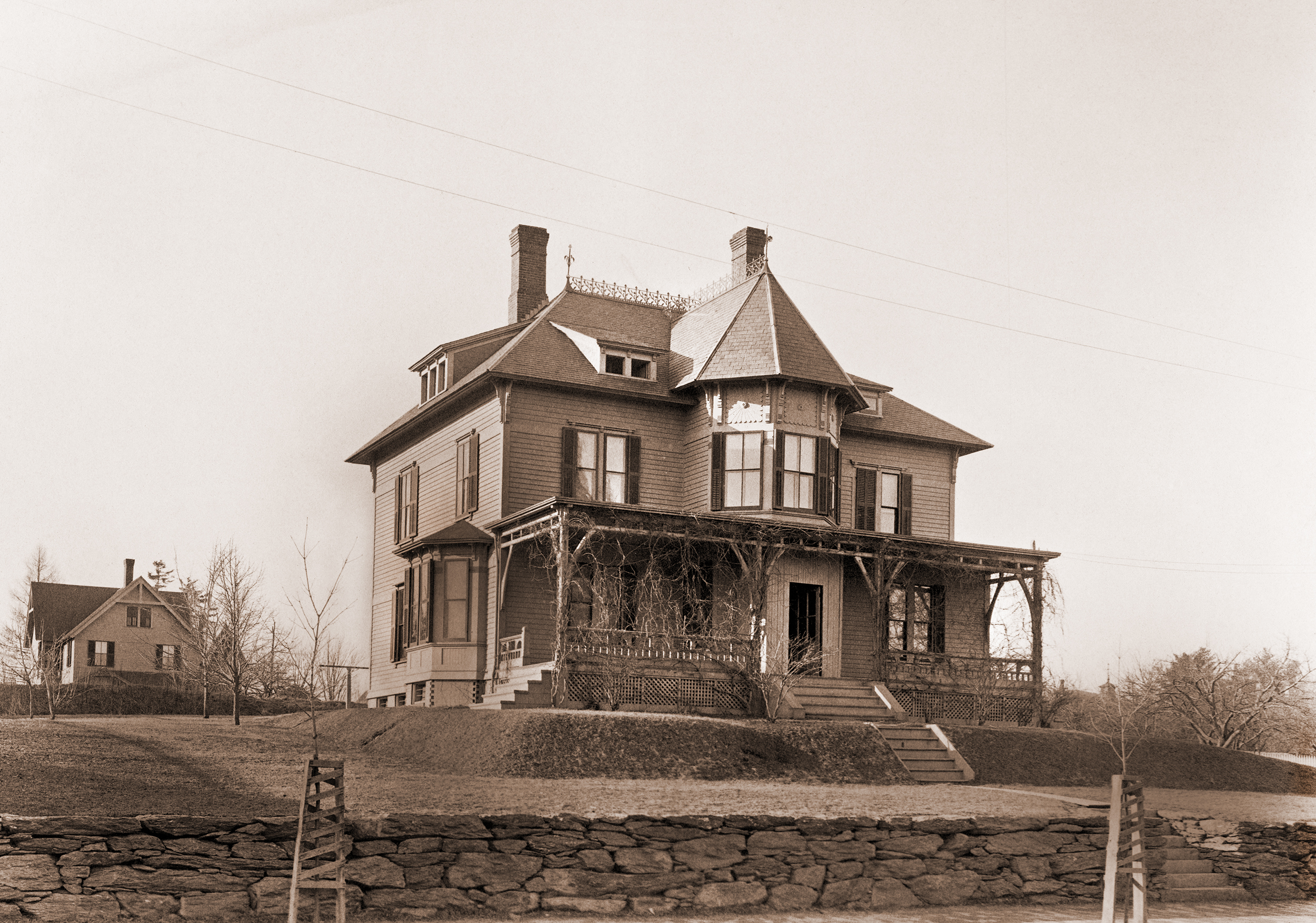
Professor’s House owned by University (1893)
“‘For me, Lewis Terman (who received his Ph.D., in Psychology from Clark in 1905) recalled, “Clark University meant chiefly three things: freedom to work as I please, unlimited library facilities, and Hall’s Monday evening seminars.’ The result was ‘a university different in important respects from any other that has ever existed in America’ in its combination of the effective exploitation of smallness and individualization combined with dedication to research as an almost religious vocation” Clark University 1887–1987: A Narrative History by William A. Koelsch (p. 77)
Notes on Sources
The images for this exhibit are drawn from two collections in the Archives and Special Collections at the Robert H. Goddard Library.
Clark at the Columbian Exposition
(images marked “1893” come from this series)
In 1893, Clark University exhibited materials from the University at the World’s Columbian Exposition in Chicago, Illinois. According to an article from the Worcester Daily Spy (June 9, 1896):
“The exhibit of Clark University at the Columbian Exposition consisted chiefly of publications of 160 books, memoirs, theses, or articles by members of the university. These were bound uniformly in 25 volumes, while the walls of the alcove set apart for the university were covered with about 200 photographs of buildings, apparatus, and processes.”
What survives of this material, in the form of 174 photos, is a unique tie to our institutional past. It represents how our University, in its infancy, represented itself through images that tell the story of the growing campus and our scholarly activities and teaching resources in Mathematics, Physics, Chemistry, Biology, and Psychology. By identifying who is in the photos, it seems that the images were made during the 1891-92 and 1892-93 academic years. However, it has not known which photographs of the series were actually included in the exhibit.
The “Black Album”
(images marked “BA” come from this series)
The “Black Album” was named by the archive for the color of the paper the images are mounted on. This series of more than 60 images represents the University’s continuing effort to document itself and its growth. This series contains pictures of Clark’s campus, buildings, and departments. The series contains some dated photos that indicate this collection was made between 1911-1914, though most images are undated.
Acknowledgments
This exhibit would not have been possible without the support, creative energy, and over-the-top generosity of many people. Cynthia Shenette (Head of Archives & Special Collections) provided key insights into collections and was enthusiastic and encouraging at critical junctions. Stephen DiRado (Studio Art) — as always — was an invaluable source at every step, from selecting and scanning the images to cleaning and colorizing and printing through design and installation of the show. Dan Gillooly ’25 took on the logistical tasks of preparing, cleaning, and colorizing the scans, as well as printing the images. Sky Deitch ’23 installed the beautiful title wall, which features the graphic design artistry of Katie Metz. Prof. DiRado’s class, “Gallery Culture and Practice,” was instrumental in the design and installation of the photographs in the Higgins Lounge. The virtual version of this show was designed by Jordan Aubin. We thank him and his colleagues Meredith King, John Pennypacker, and Jim Keogh in Marketing & Communications for their support of this project. As always, many thanks to Jen McGugan and Katherine Sieminski of the Higgins School who made sure all the pieces came together accurately and efficiently. The show was curated by Matt Malsky.

